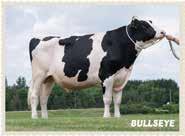MILK PRODUCER MAGAZINE CELEBRATING 100 YEARS 19 25-2025
JUNE 2025 | THE VOICE OF ONTARIO DAIRY PRODUCERS
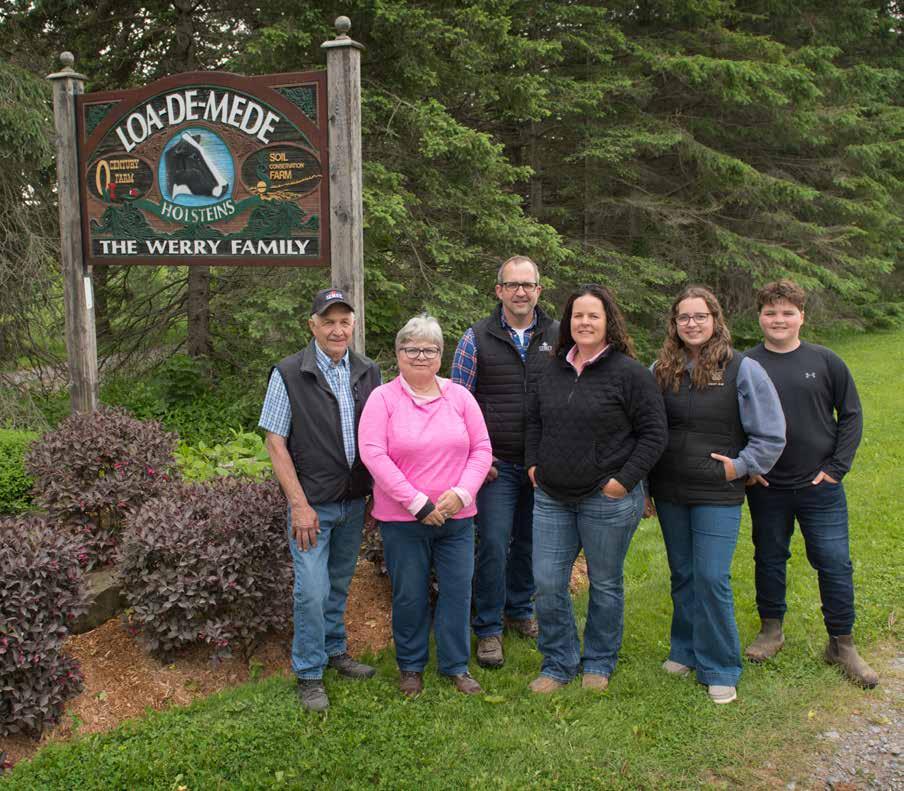

MILK PRODUCER MAGAZINE CELEBRATING 100 YEARS 19 25-2025
JUNE 2025 | THE VOICE OF ONTARIO DAIRY PRODUCERS







PUBLISHED BY
DAIRY FARMERS OF ONTARIO
6780 Campobello Road Mississauga, ON L5N 2L8
ADVERTISING
Pat Logan pat.logan@milk.org 519-788-1559
GRAPHIC DESIGN
Katrina Teimo
CONTRIBUTORS
Dairy Farmers of Ontario, Jeanine Moyer, Sean Tarry, Hanne Goetz, Lactanet, ACER Consulting, Dairy Farmers of Canada, Veal Farmers of Ontario, Workplace Safety & Prevention Services
Canada Post Publications Mail Sales Product Agreement No.40063866.
Return postage guaranteed. Circulation: 8,000. ISSN 0030-3038. Printed in Canada.
SUBSCRIPTIONS
For subscription changes or to unsubscribe, contact:
MILK PRODUCER
6780 Campobello Road
Mississauga, ON L5N 2L8
Phone: (905) 821-8970
Fax: (905) 821-3160
Email: milkproducer@milk.org
Opinions expressed herein are those of the author and/ or editor and do not necessarily reflect the opinion or policies of Dairy Farmers of Ontario. Publication of advertisements does not constitute endorsement or approval by Milk Producer or Dairy Farmers of Ontario of products or services advertised.
Milk Producer welcomes letters to the editor about magazine content.
*All marks owned by Dairy Farmers of Ontario.
www.milkproducer.ca www.milk.org
Facebook: /OntarioDairy
X: @OntarioDairy
Instagram: @OntarioDairy
LinkedIn: dairy-farmers-of-ontario




By Mark Hamel, Board Chair, Dairy Farmers of Ontario
There is a meeting room at the DFO head office where copies of every issue of the Milk Producer are caringly displayed, from 1925 to today. One hundred years of serving as the voice of dairy farmers, sharing our stories and expertise to help manage better dairy farms.
Looking through past issues over the last 10 decades, it is remarkable to see the evolution and changes in our sector. Perhaps more remarkable is what has endured, dairy farmers pride in our farms and producing quality milk for Ontarians. It is also amusing to see how advertisements have changed (or not) over the years. In this issue, we are sharing some of those moments and industry stories with all of you, honouring the Milk Producer tradition.
We get caught up in the day-to-day management of the sector and our respective businesses,
distracted by global events, busy with community commitments, and preoccupied with caring for our families.
Our strength as a sector continues to be our commitment to work together as dairy farmers, to sustain not only our individual farms but the sector as a collective. Together we are able to tackle challenges, united we are stronger, and collectively we are responsible for maintaining the trust and confidence of Ontario consumers in Canadian milk.
We need to collectively invest in maintaining the delivery of high-quality, sustainable milk for Canadians. That requires every farm licensed to produce milk in Ontario to meet all policies and requirements to ensure quality, safe milk is collected by DFO and sold to our customers to transform into dairy products. DFO is committed


Vicky Morrison
to working with farmers to ensure we have the right programs and policies to support continued investment on farms, providing access to the tools and information to make responsible business choices for our respective farm operations.
And Milk Producer continues to be an important vehicle to transfer knowledge on best practices, first-hand experience and other tools to support Ontario dairy farmers.
Together, we all have responsibilities and opportunities to help ensure that Ontario dairy continues to be a flourishing sector, nourishing our communities for the next 100 years.
We hope you enjoy this special issue, celebrating 100 years of Milk Producer, our shared history, our farms, our families, our community.
For a century, the Milk Producer has been the trusted voice of Ontario’s dairy farmers — advocating, informing, and inspiring progress. We’re proud to stand alongside the industry it champions, supporting dairy producers, Milk Producer, and the future of Canadian agriculture.

Jordan Bowles, CPA, CGA, Partner 226.775.3033 | jordan.bowles@mnp.ca
Milk Producer magazine is the official publication of Dairy Farmers of Ontario and was launched in 1925 to keep producers and stakeholders informed about the dairy industry. The magazine is celebrating 100 years in production this year!
As the voice of Ontario dairy farmers, Milk Producer has been dedicated to the health and welfare of all aspects of Ontario’s dairy sector – from the animals under farmers’ care, to the farms themselves, to the safe and reliable system that produces high-quality milk for consumers.
Milk Producer has continued to be a key point of contact for the producer community and its stakeholders. The publication reaches dairy farmers, as well as veterinarians, industry organizations, education, government, and other stakeholders.














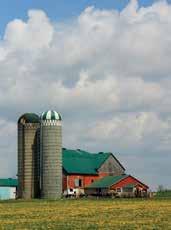

By Cheryl Smith, Chief Executive Officer, Dairy Farmers of Ontario
It is humbling to celebrate 100 years of Milk Producer with all of you – generations of Ontario producers, DFO team and industry colleagues, past and present.
Since June 1925, Milk Producer has been the voice of Ontario dairy producers, bringing together farmers and industry experts from across Ontario and Canada to share stories and best practices in support of a dynamic and growing dairy sector.
When you read the stories that give voice to the legacy that is Ontario dairy over the last 100 years, resilient, dedicated and hardworking come to mind.
The enduring promise of the dairy sector and unwavering commitment to our community is nothing short of remarkable. It also speaks of the humble, steadfast focus
that has been passed down from generation to generation, throughout the last 10 decades, to produce high-quality milk for Ontarians.
From 1925 to today, Ontario dairy has been a steady, comforting part of Canadians every day, thanks to your commitment and passion. Then and today, Milk Producer is your voice, your community resource to share experiences and best practices, translating research and science into practical applications on your farms. Animal nutrition and herd care, genetics, soil and crop management, farm financials, Milk Producer strives to provide tips to support all aspects of operating a well-managed dairy farm.
Working in dairy is a privilege. The dedicated DFO team are passionate about

working with 10,000+ dairy farmers and your families, our customers and industry partners, to deliver high-quality milk from Ontario’s 3,187 farms.
Together, we provide Canadians with nourishing dairy products, while caring for our communities and investing in Canada.
We look forward to continuing our work with dairy farmers to remain a trusted source for milk and dairy products by Canadian consumers.
To all the farmers who have generously
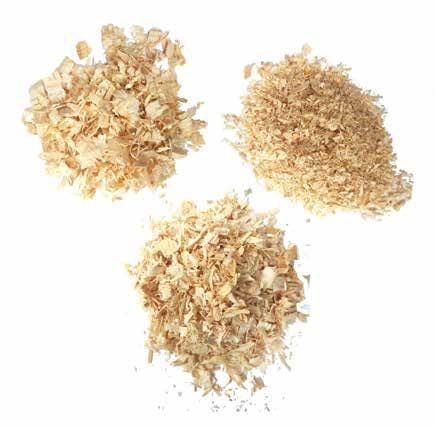

By Jeff Hyndman, Executive Director, Regulatory Compliance and Quality Assurance, Dairy Farmers of Ontario


DFO HAS ALWAYS BEEN COMMITTED to producing some of the world's highest-quality milk, which is deeply rooted in Ontario's rich dairy history. As part of our shared history, Ontario dairy producers have always pushed for continuous improvement, ensuring they consistently meet their customers' evolving demands.
As a part of that commitment, the Ontario Ministry of Agriculture, Food and Agribusiness (OMAFA) delegated authority to DFO to administer and enforce the Raw Milk Quality (RMQ) Program under Regulation 761 of the Ontario Milk Act for bovine milk. DFO appoints the Director of Regulatory Compliance (DRC) to oversee this crucial program. As the current DRC, I oversee sampling, milk and water quality testing, farm inspections, penalty applications, and Bulk Tank Milk Grading activities and performance. This responsibility extends to the activities of the Production Division, which was established in the founding year of the Ontario Milk Marketing Board in 1965. The work of this division is central to the quality of milk produced on Ontario farms, a topic my DRC Corner will highlight in this special 100th year anniversary issue of the Milk Producer.
The importance of milk quality was recognized early on in our history. In November 1965, the Ontario Milk Marketing Board (OMMB) established a Quality Committee, tasked with addressing the quality requirements outlined in the Milk Act and its regulations – a matter of great significance for the 11,255 dairy farmers in Ontario at the time. This early focus set the standard for our commitment to milk quality. For example, in 1980, a new Grade A bacteria standard introduced a total plate count limit of 50,000 CFU/mL and limits on coliforms, psychrotrophs, and the absence of Salmonella and Listeria. This standard was further reinforced in 1981 by adopting a single milk quality benchmark requiring all farms to meet Grade A requirements.
Responding to producers' evolving needs, the OMMB launched the Udder Health Management Program in April 1982 to improve milk quality by reducing somatic cell counts (SCC) and mastitis. This program provided on-farm technical support to producers on a partial cost-recovery basis.

This proactive approach was further strengthened by adopting a fresh milk sampling and testing program on March 1st, 1985, followed by implementing a penalty program for high somatic cell counts on August 1st, 1989. The OMMB's commitment to ensuring the highest quality milk was evident in the gradual reduction of the acceptable bulk tank SCC limit from 800,000 cells/mL in August 1989 to 500,000 cells/mL by August 1995, and further to 400,000 cells/mL in 2012, demonstrating the industry's readiness to meet increasingly stringent quality standards.
The evolution of the RMQ program continued with DFO assuming responsibility for the program from Ontario Ministry of Agriculture, Food and Rural Affairs (now OMAFA) in 1998. This transition was supported by a dedicated team of Field Service Representatives (FSRs) within DFO's Production Division.
In 2003, the Ontario Dairy Quality Assurance Program requirements were finalized, encompassing crucial aspects like the Livestock Medicines Certificate, potable water, timetemperature recorders, and Standard Operating Procedures. This program evolved into the national Canadian Quality Milk (CQM) program in 2010, with full producer compliance required by 2014. CQM subsequently formed the basis for Dairy Farmers of Canada’s proAction initiative, which was launched in 2015 and remains a cornerstone of the national quality assurance framework.
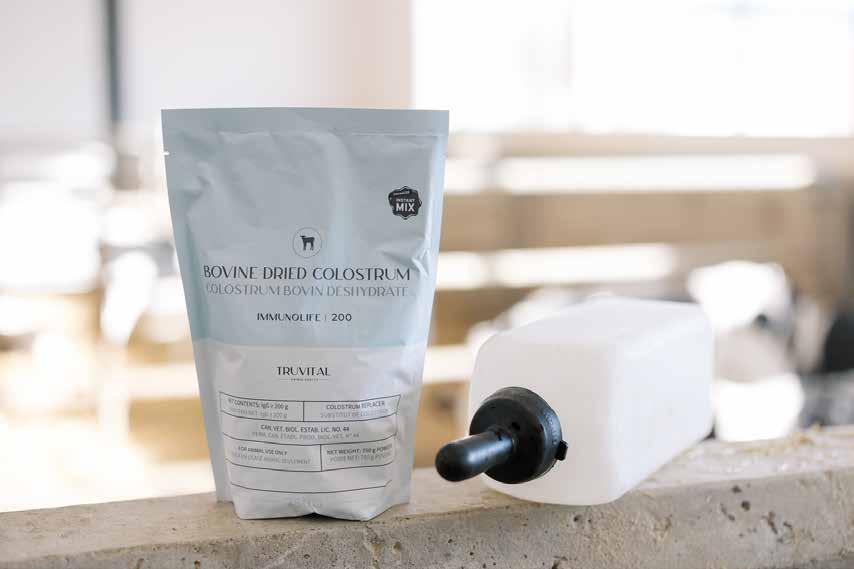


Continuous improvement in testing methodologies has also played a vital role in our history. Starting June 1, 2010, a new lab testing contract provided producers with more comprehensive data for farm management, including composition, SCC, freezing point, and weekly bacteria testing using Bactoscan. The recent implementation of the Enhanced Lab Services program in 2024 further enhances this by providing producers with timelier and more actionable Bactoscan results for each bulk tank, typically within two days of sampling.
As we look towards the future of milk quality in Ontario, our history underscores our enduring dedication to producing some of the highest quality milk in the world. The continued hard work, innovation and commitment of Ontario's dairy producers, building upon this rich history, will continue to raise the bar on milk quality.

PACKED WITH A HIGHER CONCENTRATION OF IGG, IMMUNOLIFE | 200 IS THE ULTIMATE CHOICE FOR YOUR CALVES' HEALTH AND VITALITY.
FUTURE PERFORMANCE IS: 100% CANADIAN SKIM TO SUPPORT THE CANADIAN DAIRY INDUSTRY

Patrice Dube began his distinguished career with Dairy Farmers of Ontario in 2008 as an Economist, bringing with him a wealth of experience and knowledge in the Canadian dairy industry honed through previous roles with the Canadian Dairy Commission and Les Producteurs de lait du Québec.
As Chief Economics & Policy Development Officer, Patrice played a critical role in shaping DFO’s policy and economic strategies, working closely with the DFO team and Board, provincial partners, and industry stakeholders to address pressing dairy issues.
Patrice’s depth of knowledge and unwavering commitment to the dairy industry has created a lasting impact. His contributions helped shape the future of provincial and national dairy policy, and his leadership supported the development of those who have had the privilege to work with him.

Dairy Farmers of Ontario (DFO) has an annual scholarship program that offers up to six $5,000 scholarships to high school students entering a post-secondary degree or diploma program in agriculture.
To be eligible for these scholarships, an applicant must:
• be the son or daughter of a DFO licensed producer;
• be entering semester one of an agricultural degree program or a diploma program with a demonstrated tie back to agriculture (up to one scholarship will be available from a non-traditional degree or diploma program);
• have achieved an average of 80 per cent or greater in Grade 12 credits (best six to be averaged).
Selection criteria will be based on:
• academic achievement;
• future career plans;
• demonstrated leadership in secondary school and community activities.
How to Apply:
• Application forms are available on DFO’s website at new.milk.org under Industry Login. On the left-hand side, go to Documents > Forms > Application for DFO Scholarships.
• Dairy Farmers of Ontario must receive complete application forms by Aug. 30, 2025, to be considered.
For details: contact Robert Matson at robert.matson@milk.org or 905-208-7981
On behalf of DFO, we extend tremendous gratitude to Patrice for 17 years of dedicated service.
Q: Over the last 35 years, as you worked on policy to support growth and advancement of the Canadian dairy industry, what was your primary motivation to persevere through the challenges?
A: It has been a privilege and an honour to represent Ontario dairy farmers over the last 17 years and to work for the Canadian dairy industry for over 35 years. Throughout the years, surveys have consistently shown that Canadians recognize the importance and have trust in dairy farmers. During my career, I always admired dairy farmers’ personal and family values, for being hard workers and their natural sense to have the common good prevail over the individual interest.
Q: Looking back, what changes stand out for you? Looking forward, what do you hope to see as the next policy goal?
A: The Canadian dairy industry has certainly evolved over the last three decades. In this world full of uncertainties, what stands out is that supply management is an amazingly resilient system.
However, there remains a lot to do. Supply management must be a dynamic model, not a static one, and it should be treated like a national treasure. It needs to be cherished and nourished so that it can continue to grow and evolve. An integrated national pool, where not only revenue, but also all fluid and industrial markets and costs can be fully pooled in a fair and equitable way amongst producers across the country, is, in my view, a goal that is within reach in the foreseeable future. Such an achievement would be the ultimate recognition that there is only one national dairy market. That is my most sincere wish for the future of the industry.
Q: Over the last few months as you’ve shared stories, they always center around the people that you’ve met and worked with along the way, and the impact that had on your career.
A: I am thankful to have worked with Cheryl and Kristin and all their support. I am grateful for the DFO and national staff, and their dedicated work for the good of the industry and their friendship. I also thank Peter Gould and Phil Cairns for giving me the opportunity to work at DFO. It is a great organization that is steadfast in its commitment to Ontario dairy farmers.
‘‘ All future tankers I’m going to add to my fleet will be outfitted with this new suspension. ’’
Yvon Guérard Forfait Somerset, Plessisville, QC
‘‘ Over rolling hills, even little bumps, it’s smooth working with a tanker fitted with the XT suspension. The tanker is independent from the tractor and its draw bar is no longer rigidly attached to the tractor. It is flexible and it actually follows the contour of the terrain. There’s a customer that we go to and there’s a 1-and-a-half-foot drop we need to drive through and there’s only one tanker that I will go there with, the one fitted with the XT suspension. ’’

BRITISH COLUMBIA
Mountain View Electric Ltd.
Enderby — 250 838-6455
Pacific Dairy Centre Ltd.
Chilliwack — 604 852-9020
ALBERTA
Dairy Lane Systems
Leduc: 780 986-5600
Blackfalds: 587 797-4521
Lethbridge: 587 787-4145
Lethbridge Dairy Mart Ltd.
Lethbridge — 888 329-6202
Red Deer — 403 406-7344
SASKATCHEWAN
Dairy Lane Systems
Warman — 306 242-5850
Emerald Park — 306 721-6844
Swift Current — 306 203-3066
MANITOBA / NW ONTARIO
Penner Farm Services Ltd.
Blumenort — 204 326-3781
Thunder Bay ON – 800 461-9333
Tytech
Grande Pointe — 204 770-4898
ONTARIO
Claire Snoddon Farm Machinery
Sunderland — 705 357-3579
Conestogo Agri Systems Inc.
Drayton — 519 638-3022
1 800 461-3022
County Automation
Ameliasburg — 613 962-7474
Dairy Lane Systems
Komoka — 519 666-1404
Keith Siemon Farm Systems Ltd.
Walton — 519 345-2734
Lamers Silos Ltd.
Ingersoll — 519 485-4578
Lawrence’s Dairy Supply Inc.
Moose Creek — 613 538-2559
McCann Farm Automation Ltd.
Seeley’s Bay — 613 382-7411
Brockville — 613 926-2220
McLaren Works
Cobden — 613 646-2062
Melbourne Farm Automation
Melbourne — 519 289-5256
Watford — 519-876-2420
Silver-Tech Systems Inc.
Aylmer — 519 773-2740
Dunnville — 905 981-2350
ATLANTIC PROVINCES
Atlantic Dairy Tech.
Charlottetown, PE — 902 368-1719
Mactaquac Farm Equip. Ltd.
Mactaquac, NB — 506 363-2340
Sheehy Enterprises Ltd.
Shubenacadie, NS — 902 758-2002
Sussex Farm Supplies
Sussex, NB — 506 433-1699


YEARS of dairy by
1925
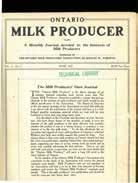
Ontario Milk Producer's first issue in June 1925 clearly stakes out the magazine's turf as an advocate for family dairy farms.
The Ontario Milk Producer is the direct outcome of an insistent demand extending back several years that The Ontario Milk Producers' Association publish a journal devoted exclusively to the interests of milk producers and which would be the official mouth-piece of the Association.
1926
Ice provides the only source of cooling on the vast majority of farms. Change is in the wind as Frigidaire introduces a new electrical powered cooling device. This early cooler has a brine tank that holds up to six 10-gallon milk cans. Outside the immediate vicinity of towns and cities, however, many farms lack electricity.
In the latter half of the 1920s, a prosperous economy sets the stage for higher fluid milk prices. Issue after issue of the magazine calls for better returns to producers.
1928
The Canadian Creamery Association of Ontario votes to support pasteurization of all cream made into butter. By November 1929, the magazine reports the majority of fluid processors favour pasteurization.
The magazine also provides tips for on-farm quality improvements. For example, many producers still milk by hand into pails. A 1925 report on tests at Ottawa's Central Experimental Farm notes that poorly cleaned pails are the chief source of bacterial contamination.



The Depression years bring a battered economy and low milk prices. Producers band together and develop associations to help negotiate for better prices.
1930
The Dairy Products Act comes into effect. It regulates milk sampling and handling in processing facilities.
1932
The Depression hits producers hard. Prices for farm products are lower than the values of the same products in 1913.
1933
Ontario Milk Producer editorial says, "Without effective organization there is no hope of stabilizing the fluid milk market." In May, the Ontario Whole Milk Producers' Association meets for the first time.
1933
A quota system is introduced in Toronto for the fluid market.
The Ontario Whole Milk Producers' Association board asks the provincial government to enact laws requiring all distributors of milk for public consumption to be licensed. This is to protect producers by maintaining prices, guaranteeing payment and standardizing butterfat content.
1934
The concentrated milk producers form an association to help them negotiate minimum prices with processors.
1936

Milk consumption is higher in rural areas than in cities, says a study by the federal government. Per capita consumption per day in Ontario was 0.9 pints (500 mL) in rural areas compared to 0. 71 ( 400 mL) pints in the city surveyed.
1937
Labour costs in milk production are published. A typical wage might be a dairyman paying $25 a month plus board valued at $20, a total monthly wage of $45. "With 30 working days during the month, of 10 hours each, this would resolve itself into a rate of 15 cents per hour."
Researchers interview 1,500 dairy producers. The project says the average return per cow unit of livestock is $79 in the fluid milk zones and $56 in the processed milk zones.
The industry continues to call for pasteurization of all milk. Laws making pasteurization compulsory in all parts of Ontario are in effect by the end of 1938. Artificial insemination (Al) in cattle is developing. In Canada, the practical application of Al had begun in Manitoba in 1932. The first unit is organized in 1938.

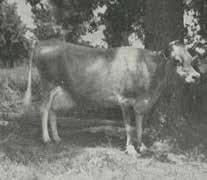



Throughout most of the war years, the Wartime Prices and Trade Board dictates legal prices for many commodities at all levels. The war effort encourages dairy farmers to produce as much milk as possible. But farmers are compensated at much lower levels than industrial workers.
1940
Britain appeals for all the cheese Canada can produce. Ontario, the nation's biggest cheese producer, is seen as the major supplier. Cheese factories gear up to increase production 25 per cent.
1942
After the government freezes fluid milk prices, some fluid shippers threaten to kill off their herds for beef. The magazine points out that farm prices are just 43.5 per cent of the prices received in 1926. Yet industrial wages are 19.6 per cent higher than wages in 1926. Intensive lobbying later brings farmers modest increases.
1945
As the end of the war nears, the June 1945 Milk Producer reflects on dairy industry changes in the past two decades: "The last 20 years have seen tremendous advances in farm organizations, not so much for educational or social purposes, not at all for political reasons, but to ensure for the farmer a fair deal on the market."
Anti-margarine sentiment characterizes the Ontario dairy industry in the 50s, as the less costly product and cuts into butter sales. Quebec bans the manufacture and sale of margarine. The Premier says, 'The government will do all that is within its power to strengthen measures against such competition against the dairy industry."
Dairy Farmers of Canada launches its first national promotion campaign in the 1950s. Slogans from that campaign include: "Make Mine Milk;" "Pass the Butter, Please;" "OK, But Where's the Cheese?" and "Let's Have Ice Cream-Everybody Likes Ice Cream."
1951
Artificial insemination continues to make strides. Canadian farmers and cattle breeders have accepted it and organized breeding units are operating in every province. Some are large, carrying fifty or more bull studs.
1953
Bulk milk collection begins. Ideal Dairy in Oshawa runs a small pilot project, the first of its kind in Canada. Producers in the project replace their ordinary coolers with bulk tanks. Proponents of bulk collection say the method promises lower transport costs, higher butterfat tests, more accurate weighing without milk losses, and reduced handling costs at the farm and dairy.

Canada's first Dairy Day is held at a farm near Alma, Ont. in the summer of 1953. Eight thousand people attend
Organizations such as the Toronto Milk Producers Association have well-developed policies on quotas for individual producers. The association takes on responsibility for selling, placing and hauling of milk for its members.
1949
The industry as a whole starts to come to grips with other challenges. Margarine becomes a legal product by the end of the decade, creating competition for butter. About the same time, the magazine starts carrying regular reports about disease threats-particularly the rise of brucellosis.
Insemination gets a further boost. The federal experimental farm services establish a frozen semen laboratory at the Central Experimental Farm in Ottawa for shipping frozen semen to herds at branch farms across Canada. This new technique offers breeders a wider bull selection. 1956
Dairy research needs to be funded by both government and dairy farmers. 'There is a crying need for the organizations of this country to not only provide more of their own funds but to promote the use of a greater portion of public for dairy research in all its phases.

Towards the end of the decade, a magazine editorial worries about the effect the advent of 2 per cent milk is having on sales and producer quotas.


During the first half of the 1960s, the Ontario dairy industry focuses much of its energy on debating what kind of marketing plan it needs. Halfway through the decade, a new marketing plan is devised and the industry spends the rest of the 1960s implementing it.
1961
The magazine reports two political appointments that would eventually loom large in the industry's future. William Stewart is named Ontario agriculture minister and Everett Biggs, his deputy minister. This dynamic duo set in motion a process that eventually ends the debate with the establishment in 1965 of the Ontario Milk Marketing Board (OMMB).
The magazine ensures dairy farmers are well-informed about the process leading up to the board's formation. From September 1963 until June 1964, it covers the Ontario Milk Industry Inquiry Committee hearings held across the province.
1965
The magazine excerpts five pages from the new Milk Act. By August, it reports that George McLaughlin is chair of the new OMMB.
In the 1960s, producers begin replacing their bucket milkers with pipeline milking systems.
As the OMMB moves forward with reform of transportation, producer payment and other key policies, the magazine is there to explain it. As the decade draws to a close, reports and editorials promote a strong and united industry in the face of a challenge to pooling by the Channel Island Breeds. The OMMB wins. It then turns its attention to raising returns for beleaguered milk shippers and begins to talk about a national supply management plan.
In addition to updating dairy farmers about OMMB policies, the magazine alerts them to threats to milk consumption. Nuclear bomb testing, for example, heightens public fears about Strontium 90, a radioactive isotope, getting into milk. However, numerous articles declare milk is safe. Another danger to milk consumption, the magazine warns, is the growing popularity of soft drinks. In January 1963, it reports the Dairy Farmers of Canada promotional budget is $350,000. In February, it notes Coke and Pepsi are likely to spend $30 million each to promote their soft drinks in North America.
1967
Milk bags make their debut.
1968
Group I Price Pooling commenced March 1st


The 1970s bring dairy supply management and the metric system. The OMMB begins making payments on behalf of plants as the Industrial Plan comes into effect in 1970. While initial producerprocessor relationships stay the same, the board plans to reorganize transport routing to improve efficiency.
1970
Transport charges are pooled and milk pricing by end-use classification comes in. Also in 1970, the plate loop count comes in as new method for testing raw milk for bacteria, replacing the resazurin test.
1972
The two-colour milk logo in use today starts to be used in displays and promotional materials.
1974
One farm family fed itself and 50 other people, four times as many as in 1944, notes Ontario Milk Marketing Board chair George McLaughlin.
The first milk calendar is printed and distributed to Canadian households.
1975

Ontario Milk Producer magazine features the last known horse-drawn milk wagon operating in Ontario on its magazine cover.
Industrial shippers are invited to apply for graduated entry into the fluid pool. The industrial pool begins for southern Ontario.
1976
Federal researchers can now determine calf sex nine months before birth, the magazine reports, describing this as a first in world breeding. Agriculture Canada veterinarians can now determine the sex of a twoweek-old calf embryo taken from its natural mother's uterus.
World trade is under scrutiny. Exports are not the bulk of a producer's cheque, Richard Tudor-Price, director of marketing for the Canadian Dairy Commission, says in 1976. "World trade in dairy products is extremely small relative to total production. No more than five per cent of world dairy production is traded outside the trading entity in which it is produced."
1977
A skim-off levy is introduced as a way for compensating MSQ shippers for lost market share. As the decade wraps up, the editor runs a series about using personal computers to help run a farm business, foreshadowing the importance of computers as a dairy management tool.





The move to bulk tanks continues as industrial shippers are required to have a bulk tank large enough to hold two days of production. Fluid shippers still using cans convert to bulk tanks by the end of 1977.
Quota transfers become an issue as producers say the system creates additional expense. Staff propose a quota exchange as a way of transferring quota. Quota prices are a topic at Geneva Park in 1977. Alternate methods of transferring quota are discussed and assessed as the decade closes.
1978
The OMMB converts to metric April 1. Milk is now officially measured in hectolitres.


Expanding markets and quota increases mark the beginning of the decade. But controversy arises just after the OMMB launches its new quota exchange. Quota values start to climb. Numerous studies conclude that freely negotiable values for quota are in the best interests of producers, consumers and the economy in general. Yet the high quota value debate never goes away.
1982
Udder Health Management Program commences in April.
1983
DFO opens a new head office in Mississauga following inaugural years in downtown Toronto.
National Milk Marketing Plan, part of Canada's supply management system, was developed. The primary goal was to manage milk supply and prices to ensure a stable and predictable dairy market for both producers and consumers.
1985

A welcome report announces that Canada, including Ontario, is now declared brucellosisfree. Eradicating the disease had taken decades.
The following year, OMMB chair, Ken McKinnon, steps down after nine years at the helm to become vice-chair of the Canadian Dairy Commission. Grant Smith assumes the mantle of leadership, becoming only the third chair in the OMMB's 20-year history. Among the bigger issues he must tackle is trade. When Canada enters free-trade negotiations with the U.S. in the mid-1980s, producers grow increasingly concerned about Ottawa trading away our dairy industry.
The February issue reports Agriculture Minister John Wise's announcement that a new import control list will cover key dairy products. The new free trade agreement won't affect supply management.
1989
Penalty program for high somatic cell counts introduced August 1st.
Dairy farmers now turn to their General Agreement on Tariffs and Trade (GATT) negotiations. Article XI of the GATT, which permits a country to restrict imports of a certain commodity, is seen as crucial to supply management's future. An interim GATT agreement is signed in 1989 to prevent escalation of trade-distorting subsidies in Europe and the U.S. Canadian dairy farmers are unfairly penalized when Ottawa caps industrial milk prices in response. Producer concerns escalate, and in May, the magazine reports that Ottawa is sending mixed signals about its intentions in the trade negotiations.






Consumer preoccupation with low-fat foods flavours the 1990s. One per cent milk is approved by Ontario Farm Products Marketing Commission in 1990. The OMMB, concerned with skimoff, increases the skimoff levy.
In the 1990s, product promotion includes Toronto Blue Jays Joe Carter and Toronto Maple Leafs Doug Gilmour in two highly memorable advertising campaigns. Also, the Ontario Dairy Princess Program ends mid-1990s, replaced by the Ontario Dairy Education Program.
1991
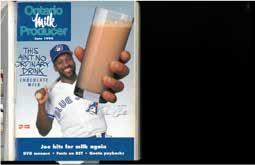
Food Bank Program for fluid milk products is initiated. Producers donate a portion of their shipments to the program. Milk transporters transport the donated milk free of charge. Participating dairy processors process and package the donated milk free of charge. The resulting products are donated to the Food Bank.
The P5 Agreement is established involving Ontario, New Brunswick, Nova Scotia, Prince Edward Island, and Quebec, and will pool markets and revenues to rebalance producer bargaining power.
MSQ is issued in kilograms of butterfat rather than in hectolitres of milk. Multiple component pricing begins.
1992
Starting in 1992, separate prices for the kilograms of fat, protein and other solids determine milk cheque payments. The system now allows for prices to change as consumer preferences for milk components change.
Farmers swarm Parliament Hill on February 21st at an Ottawa rally, the climax of a month-long lobbying campaign. The rally shows support for supply management and asks for a clarified Article XI in the General Agreement on Tariffs and Trade.
The national pooling plan brings special class prices. As well, six provinces strike a deal on promotion spending.
Stiffer milk quality regulations come in January. Producers with continued high somatic cell counts can now be shut-off from market.
1993
The Lifetime Profit Index shifts to emphasize protein.
In 1993, cream producers have been allowed to convert 100 per cent of cream quota to milk.
1994
The GATT agreement is signed. It will allow the Canadian dairy industry to continue using supply management in an altered form, but deems producer levies to be export subsides. Price pooling is allowed.
Canada’s first organic dairy products are launched in Ontario. First on-farm dairy processing plant established in Ontario.
Single pool, payment and quota system implemented August 1st
Graduated entry for industrial shippers, in place since 1971, is cancelled to help integrate industrial and fluid shipping completely. The single-quota payment system comes in August 1st. The province's four pools each had their own quota, payment, allocation, and transportation policies. These four pools merge into one.
1995
Dairy Farmers of Ontario (DFO) is formed from the OMMB and the Ontario Cream Producers Marketing Board.
The Ontario government allows butter-coloured margarine to be sold.
Microfiltered milk is introduced. The new technology has an extended 60-day shelf life.
Free Trade Agreement dispute with the U.S. about access to ice cream and yogurt markets in 1996.
Daily quota begins in Ontario.
DFO commences participation in the interprovincial quota exchange with Quebec and Nova Scotia.
DFO assumes responsibility for the raw milk quality program. DFO switches to BactoScan from plate loop count test for bacteria testing.
Butteroil-sugar blends, an import problem since mid-1996 occupy DFC.
Pooling of transportation costs across the P5 commences August 1st
Major ice storm affects milk pickups and processing in Eastern Ontario and Western Quebec. Many producers and plants without power for days, and some for weeks. Ontario transports milk to Michigan for processing and re-import to Canada.
The first commercial automatic milking system (AMS or ‘robotic milking system’) in Ontario is introduced.
Debate over the use of rbST in milk production continues over the decade. Health Canada decides not to approve the product.
Scientific technology advances rapidly. One major development is successful animal cloning research, leading to calf clones.
A short-lived interprovincial exchange ends after Nova Scotia pulls out in early 1999. Ontario pulled out in 1998. Quebec was the other participating province.



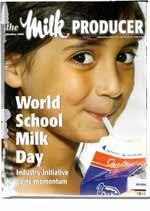

The United States and New Zealand launch a WTO challenge against Canada. The legitimacy of the commercial contracting systems for export milk that were implemented by all provinces following the 1999 WTO Ruling against Canada on special classes 5(d) and 5(e) was challenged. The essence of the challenge was that the commercial export contracting, like special classes 5(d) and 5(e), still constituted an export subsidy. The WTO Compliance Panel ruled in favour of the United States and New Zealand.
2001
DFO receive a $2 million grant from the Ontario Government’s Early Years Challenge Fund to support the expansion of the DFO Elementary School Milk Program.
2003
Requirements for Ontario Dairy Quality Assurance Program finalized by DFO Board in May. Program requirements (Livestock Medicines, Certification, Potable Water, Time Temperature Recorders, Standard Operating Procedures) to be phased in and fully implemented by January 1, 2007.
2004
CMSMC takes steps to limit the production of solids-not-fat within the available butterfat quota. The policy measures were designed to limit the size of the structural surplus to what can be readily marketed through low valued internal markets and within Canada WTO limits for subsidized dairy exports.
2005
DFO introduces a policy to cap the solids-non fat production of producers at 2.35 with the ratio being administered on a cumulative dairy year basis. Ontario producers become subject to a zero payment policy for within-quota SNF production in excess of the ratio.
2006



Characterized by growth, investment, and evolution, the dairy system faces tough trade challenges, but dairy farmers and sector partners feel the support of the Canadian government and consumers for a system that works.
2010
After working through issues for several years with the Ontario Ministry of Agriculture, Food and Rural Affairs (OMAFRA), DFO and the Ontario Dairy Council (ODC) sign a five-year contract with the University of Guelph to be its laboratory services provider. Under the new contract, all producer milk samples are tested for composition, SCCs and freezing point estimates, and one sample is tested weekly for bacteria.
2011
The Ontario Court of Justice reaffirm that the sale, delivery or distribution of unpasteurized milk or milk products is prohibited.
2013

CMSMC takes the decision to create a more competitively priced milk class (Class 3d) for mozzarella cheese used on fresh pizzas. The main purpose of this new milk class is to provide restaurants access to mozzarella cheese at a reduced price for pizza prepared and cooked onsite.
DFC's proAction is launched.
TTP negotiations conclude.
In times of milk surplus, DFO begin skimming milk where only the cream is retained by the plant and the skim milk is non-marketed. This is in response to increases in demand for butterfat only without a corresponding requirement for protein.
DFO makes a number of changes in producer quota polices to curb and limit the escalation in quota prices and values.
2009
The P5 Harmonized Quota Policy, which includes the New Entry Quota Allocation Program (NEQAP) is adopted. This policy aims to harmonize dairy quota practices among the five provinces involved in the P5 Agreement. NEQAP was a key component, allowing new entrants to the dairy industry to acquire quota.
New Producer Program (NPP) is developed which allow new producers to enter the dairy industry, via means other than through the purchase of an existing farm operation or NEQAP.
Opening of Dairy Facility at the Elora Research Station. The $25-million, 175,000-square-foot research facility is completed in May. It is a joint project of the Agricultural Research Institute of Ontario (ARIO), the Ontario Ministry of Agriculture, Food and Rural Affairs (OMAFRA), the University of Guelph and the Ontario dairy industry represented by the Dairy Farmers of Ontario. The Dairy Facility is managed by the University of Guelph through the Ontario Agri-Food Innovation Alliance, a collaboration with OMAFRA. The facility enables world-class research that helps keep the Ontario and Canadian dairy sectors innovative, competitive and sustainable. World dairy prices and the tariff wall international dairy product prices drop substantially. The sharp drop in prices comes after the biggest importer of dairy products, China, cut imports, and the second largest importer, Russia, banned imports from the US and the EU. This led to the sharp drop in prices to clear the excess supply in the market.



The National Ingredients Program is designed to provide greater opportunity for growth, innovation and investment by providing a more competitive market for domestic dairy ingredients.
The Ontario Ingredient Program is implemented, which includes the creation of a new competitively priced ingredient class, Class 6. The Ontario ingredient program creates an environment for dairy processors to invest in new processing of dairy ingredients, which is required for future growth in the dairy industry.
Newly designed dairy barn at the Canadian National Exhibition includes more focus on education and gives visitors an opportunity to engage and learn more about the dairy industry.
Along with a number of other dairy operations producing biogas for electrical generation, Stanton Farms, of Ilderton, later became the first dairy farm to supply agriculture-based renewable natural gas in Ontario to Enbridge Gas Distribution network.
Monthly quota calculation is introduced and assumes responsibility by the CMSMC.
DFO assumes the responsibility for developing a promotion program.
2019
The federal government announces $1.75 billion in financial compensation to be distributed to Canadian dairy producers over an eight-year period for the market loss associated with the Comprehensive Economic and Trade Agreement (CETA) and Comprehensive and Progressive Agreement for Trans-Pacific Partnership (CPTPP) trade agreements.
The federal government releases an updated version of Canada’s Food Guide. Dairy is removed as a category and included as part of the broader protein group, which includes plant-based alternatives to dairy.
First Milk and Cookies campaign “Big Believers”. DFO launches first Milk and Cookies campaign with mass media and donates $500K to Ontario Children’s hospitals, as part of our corporate social responsibility programming.
First Nutritional Campaign — “What Can’t Milk Do?”

In a year of uncertainty, Ontario’s dairy farmers find a way to stabilize and even thrive. It was both challenging and rewarding.


Following the 2020 Spring Policy Conference, a new world of lock downs, remote work, school cancellations, health and safety protocols, supply chain disruptions, and grocery store line-ups.
Global pandemic hits Canada – DFO continues to pick up milk and deliver milk to processors while following protocols. Strong demand for milk in early months of COVID as consumers were staying at home and baking/ preparing more foods at home using dairy ingredients.
The new national P10 Pooling Agreement is a landmark development that will enable the fair sharing of revenues and markets across Canada.
Canada-United States-Mexico Agreement (CUSMA) implementing legislation is swiftly approved in the House of Commons and Senate before Parliament of Canada is suspended in response to the COVID-19 global shutdown. Canada is the last of the three signatories to ratify the agreement, though several issues remain to be finalized during the implementation phase. CUSMA, which replaces the North American Free Trade Agreement, includes a calculated 3.9 per cent market access to the Canadian dairy industry, the elimination of milk ingredient Class 7 and export threshold limits on the amount of milk protein concentrate, infant formula and skim milk powder the industry can export.
First Dairy Education Gaming Platform — “DairyCraft.”
Lactanet takes over the responsibility of conducting proAction validations and reviewing self-declarations on behalf of DFO.
First ever post-to-pay Pop Up in Canada — MilkUp.
The government of Canada release their 2022 Fall Economic Statement announcing that it intends to offer dairy producers extra funding of up to $1.2 billion over six years under the Dairy Direct Payment Program to account for the impacts of CUSMA.
Every effort has been made to ensure the accuracy and reliability of the content in this timeline; however, no guarantees are made regarding its completeness, correctness, or timeliness. Sources of information include, but not limited to, previous Milk Producer editions and Dairy Farmers of Ontario (DFO) annual reports, DFO 60th anniversary commemorative book, and DFO staff. The contributors and publisher disclaim any liability for any errors or omissions and accept no responsibility for any loss or damage that may arise from reliance on the information provided.
CUSMA first dairy TRQ panel — final public report is made public on January 4th. On May 16th, Canada published new CUSMA dairy TRQ allocation and administration policies. The new policies end the use of processor-specific pool, addressing the Panel’s finding that it was inconsistent with the agreement.
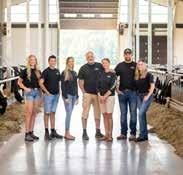


First logo ever on the Toronto Maple Leafs’ Sweater. The “milk” logo becomes the first brand to appear on the iconic Toronto Maple Leafs sweater, building on the two organizations' multi-year partnership to support healthy active living, community programming and access to hockey for players and fans everywhere.
The Royal Agricultural Winter Fair celebrates its 100th anniversary. DFO is one of the title sponsors.
First Milk Fan Zone at the Ottawa Senators Arena — Joining forces with the Ottawa Senators results in many innovative marketing executions: a Milk-branded soft-serve ice-cream and chocolate milk stand, Milk-branded penalty box, and our very own Milk Zone.
Milk Masters — First Culinary Cooking Competition is launched, highlighting milk’s irreplaceability and delicious taste.
CUSMA second dairy TRQ panel — final public report is made public on November 24. All four principal categories of claims made by the U.S. are rejected by the panel.
2023/24 school year is successful with 46 educators visiting 1,003 schools, delivering 8,624 engagements and interacting with 213,319 students. The education team produces 18 new teaching resources.


Federal government launches the Dairy Innovation and Investment Fund on September 29. The fund will provide up to $333 million toward processing investments in new capacity and increase competitiveness. Of the $333 million, $127 million is allocated to Ontario.
DFC’s advocacy efforts help advance Bill C-282, an Act to Amend the Department of Foreign Affairs, Trade and Development Act, which will prohibit the government from negotiating market access concessions in future trade negotiations.
DFO enters a partnership with the Professional Womens Hockey League (PWHL) with both the Toronto Sceptres and the Ottawa Charge.
99 per cent of Ontario producers are registered under proAction.
To maintain the highest standard of milk quality on March 1st, DFO launches Enhanced Sample Testing, which marks a significant advancement in the industry and aims to provide dairy farmers with improved testing and reporting frequency.
2025
We commemorate milestones that tell the story of our collective efforts: 60 years of Dairy Farmers of Ontario and our commitment to dairy excellence, 30 years of Dairy Education programming and 100 years of Milk Producer magazine.



The Werry family of Loa-De-Mede Farms has spent over a century blending innovation, tradition and community commitment to grow a thriving multigenerational dairy operation just outside Oshawa, Ont.
By Jeanine Moyer
AS ONE OF ONTARIO’S LONGEST-STANDING DAIRY FARM FAMILIES, the Werry’s of Oshawa, Ont. embody the evolution of the dairy industry itself – living proof of how dedication, resilience, a commitment to succession planning, and a deep-rooted passion for farming can thrive through generations of change.
Clarence Werry founded Loa-De-Mede Farms in 1922 after buying the farm from his uncle. Since then, four generations of the Werry family have built on each other’s successes to become what it is today, a progressive Ontario dairy farm.
Today, Loa-De-Mede Farms Ltd. is managed by a father and son team, Dennis and John, along with their wives, Cindy and Heather. Due to urban sprawl, the farm moved locations in 2015, to a new facility just north of the original home farm where they are now protected inside the greenbelt.
The family milks 75 cows with two GEA robots in a compost bedded pack barn and manage 400 acres of field crops.
It’s always a pleasure to work with the Werry family, whose dedication to excellence shines in everything they do. Known for being progressive leaders in the industry, they consistently go above and beyond to ensure their farm is clean, efficient and in top shape. Their legacy of breeding exceptional cows speaks volumes about their commitment and passion for dairy farming. The Werry's have every reason to be proud of their success, and it's inspiring to see how their hard work and innovation continue to set a standard for others.
– Blythe Mackie, FSR
Innovation through generations
“We’re fortunate to have a long line of innovators in our family,” says John Werry, great-grandson of Clarence. During the 1930s, Clarence helped start the Ideal Dairy processing co-operative in Oshawa. In 1952, he installed one of the first bulk milk tanks in Canada. This changed the
way the Werry family, along with many others, shipped milk, and the transition from milk cans carried by horse drawn wagons meant more milk could reach more consumers.
John’s grandfather, Bill Werry, inherited the farm from Clarence and quickly earned a reputation for pioneering soil conservation techniques. He introduced strip tillage on the farm’s rolling fields – a forward-thinking move that significantly reduced soil erosion. Bill’s innovative approach drew widespread attention, even inspiring bus tours of fellow farmers eager to learn from his methods.
Bill had four sons, and for four decades the brothers farmed together until they had enough of the encroaching pressure of the surrounding city. That’s why, in 2015, some of the brothers retired, leaving Dennis and John to form a new multigeneration Werry partnership and move the cows to a new farm location away from the city fringe.
“I missed out on milking cows by hand, but I’ve done it every other way,” quips Dennis, reflecting on the multitude of changes the farm has seen in technology and innovations throughout the recent decades. In fact, like many other Ontario dairy farms, the Werry’s changed their milking systems over the years, switching from a tie stall set up, to a parlour and then to robots as new technology became available. “I’m proud that we’ve kept our farm’s Loa-De-Mede prefix and business structure through the family and farm location transition. Loa-De-Mede is Cornish for low meadows. The name was brought from England with the original settlers of the home farm and has stayed with the farm. We’ve made a lot of changes over the years, but we maintain our spirit and success as dairy farmers,” he says.
Tradition with a vision
Generations of the Werry family have been involved in the 4-H program, and have enjoyed showcasing their animals in the show ring.

The Werry family roots run deep within Ontario’s dairy industry. In addition to the family branch that created Loa-De-Mede Farms, two other arms of the family continue to milk cows today, including Werrcroft Farms and Loka Holsteins.
Over the years, the family has also achieved countless accolades for their commitment to dairy farming and herd genetics, including nine All-Canadian nominations in the last three years and regional herd management awards. John notes that the family also sets a goal to achieve the milk quality gold seal every year.
"Hard work pays off, and sharing the positive results with family makes it even better," says John.
The family’s accomplishments, combined with their close proximity to the city, an international airport and the Royal Agricultural Winter Fair, means that they regularly attract visitors and bus tours.
“We’re the first dairy farm you reach when you drive out of the city,” says Heather, explaining that over the years their family farm has hosted public tours from schools, retirement homes, scouting groups, along with 4-H clubs and events.
Given their unique location, the farm has been exposed to a steady flow of traffic, and with that can come public scrutiny. The Werry family has always been ahead of their time, maintaining a tidy farm –inside and outside the farm buildings. “Welcoming people to our farm has and continues to be a tradition we are proud of,” says Dennis, recalling stories about his grandfather hosting visitors and noting how neighbours loved to visit the farm because it was well-kept, and one of the first homes that offered indoor plumbing in the area.
Community involvement is also another family tradition the Werry’s are passionate about. Dennis’ father, Bill, was involved with Boy Scouts, dedicating nearly half his life to volunteering with the organization.
Over the years, Dennis has committed his time to the dairy industry, volunteering with Holstein Canada, Holstein Ontario, along with local county clubs. Multiple family members have also been 4-H members, leaders and volunteers, and have been invested in supporting future generations of rural leaders.

Clarence Werry was a pioneer among Ontario dairy farmers, installing one of the first milk tanks in Canada. This helped him get dairy onto more tables across Ontario.


Now his great-grandson is continuing that same family legacy, producing high-quality local milk for Oshawa and the rest of Ontario.



I hope our industry can keep family farms like ours sustainable and profitable because dairy farming in Ontario is a rewarding lifestyle.
— John Werry
The family has also been a long-time supporter of local agricultural societies and fairs in the area. Right now, John and Heather are spending their spare time supporting the next generation of their family by volunteering with local minor hockey teams, school events and their local dairy producer committee.
Paige and Tate, John and Heather’s children, represent the fifth generation of the Werry family to be raised on the Oshawa dairy farm. They are both involved in the farm, and like generations of their family before them, they share an appreciation for the unique and rewarding lifestyle the family dairy farm provides.
“A family farm is never really yours to sell,” says John, explaining his outlook on maintaining and building on the family legacy. “We are always expanding with the hope the farm will carry on to the next generation, but this life requires a deep commitment and love for what we do.”
Both John and Heather have made it clear there is no pressure for their children to continue with the family farm legacy, saying they are grateful the option is available, but it must be a choice their kids make for themselves.
For now, Dennis and John are happy to work together as the third and fourth generations of the family. They continue to upgrade their technology, herd management and cropping practices as new technologies and innovations become available. The switch to robotic milking has been a game-changer for them, increasing flexibility and eliminating the need to rely on outside labour. They also outsource a significant amount of field work to multiple custom operators, including fellow dairy farmer and custom operator, Parbro Farms. This management transition has reduced the reliance on labour and capital investments in equipment.
“There’s tremendous value in partnerships,” says Dennis, pointing out the changes from relying solely on family labour to outsourcing tasks and responsibilities to technology and business suppliers that have evolved throughout the generations and recent decades.
The Werry family roots run deep within Ontario’s dairy industry. In addition to the family branch that created Loa-De-Mede Farms, two other arms of the family continue to milk cows today, including Werrcroft Farms and Loka Holsteins, and a fourth branch of the Werry family dairy legacy is involved in breeding and showing dairy cattle under the Werrhurst prefix.
Reflecting on the scope of changes his family has experienced on the farm, John states that he’s most grateful for the ability to continue the tradition of dairy farming at a similar size and scale as his predecessors. “I hope our industry can keep family farms like ours sustainable and profitable because dairy farming in Ontario is a rewarding lifestyle,” he says.
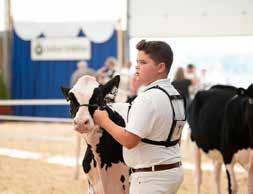






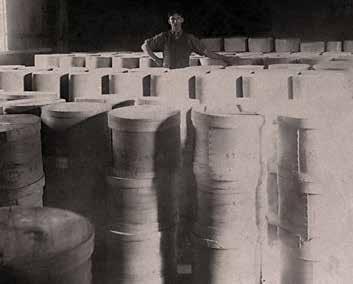
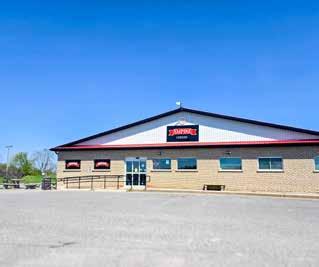
By Sean Tarry
IN A RAPIDLY EVOLVING WORLD IN WHICH MOST BUSINESSES are driven to consistently pivot in response to shifting market demands, tradition is often neglected and ignored. Yet nestled in the heart of Campbellford, Ont., Empire Cheese has not only endured for nearly 150 years, it has flourished, thanks in large part to its steadfast commitment to traditional cheese-making and its deep roots within the local agricultural community.
Founded in the late 1870s, the original Empire Cheese Factory was built on the farm of John Haig, who also served as its first cheesemaker. From these modest beginnings, the company has undergone significant transformations, but never at the expense of the traditions that shaped its foundation.
By the mid-20th century, Empire had become a fixture in the local dairy economy. In 1953, following the devastating fire that consumed the Kimberley Cheese Factory, Empire and Kimberley amalgamated to form what is now the Empire Cheese & Butter Co-operative. That same year, a new factory was constructed, with Les Shillinglaw as head cheesemaker — continuing a legacy of artisanal craftsmanship passed down through generations. Les was succeeded by Don Pollock, and today, the cheese-making baton rests in the capable hands of Mark Erwin.
“Empire has throughout its history remained dedicated to preserving the things that helped establish the company nearly 150 years ago,” says company representative, Vicki McMillan. “The quality of our product is a result of time-honoured cheese making traditions that we still adhere to today. And, what’s more, we don’t add any artificial flavour or additives to enhance the flavour, with all of our cheese aged naturally.”
Empire Cheese is now the only cheese manufacturing facility in Northumberland County and the first one located east of Toronto. Operated as a co-operative, it is owned by local dairy farmers who elect a Board of Directors annually to guide the company's direction — a model that emphasizes community involvement and shared success.
What sets Empire apart from larger, industrial producers is its unwavering dedication to making cheese the old-fashioned way. Cheese is still crafted in open-style vats using only whole milk, microbial enzyme instead of rennet, and natural ingredients. No preservatives, no artificial flavours — just pure, authentic cheese.
Today, Empire's products can be found throughout Ontario at local farmers’ markets and retail outlets. Their factory store has become a destination in itself, offering not just cheese but curated gift baskets featuring local delicacies like jams, honey and candy.
Empire has throughout its history remained dedicated to preserving the things that helped establish the company nearly 150 years ago. The quality of our product is a result of time-honoured cheese making traditions that we still adhere to today.
Balancing tradition with modern needs
Despite its nostalgic approach, Empire Cheese isn’t stuck in the past. The company has made concerted efforts to integrate modern efficiencies into its operations. They are HACCP registered, a recognition of their adherence to the highest food safety standards, and have recently implemented new software to improve process flow, inventory control and overall efficiency.
But staying competitive in today's market is no easy feat. The very values that define Empire — small-batch quality, hand-crafted products and local ownership — also create unique challenges, particularly when it comes to production costs and attracting skilled labour.
“The most significant trend currently impacting our business and opportunities for continued growth and success is the state of the economy,” McMillan explains. “Unfortunately, our processes and commitment to the highest standards of quality lends itself to a higher cost of production.”
And when it comes to staffing, Empire faces another uphill battle. “The shortage of skilled labour is always a problem for businesses looking to sustain success and growth,” she says. “But that challenge seems amplified for us because of the way we do things.”
Yet, in the face of adversity, the Empire Cheese Co-op continues to move forward with purpose. This past winter, the company completed a remodel of its factory store and is now expanding parking and greenspace to better accommodate visitors and bus tour groups. The aim is to enhance the factory’s role not just as a producer, but as a tourist destination and community hub.
“The Board of Directors is dedicated to ensuring the company thrives into the future,” McMillan affirms. “We’re always working on ways to improve while staying true to the traditions that have made Empire what it is.”
From a single vat on a family farm to a community-run co-op with province-wide reach, Empire Cheese’s story is one of dedication, craftsmanship and commitment — proving that sometimes, the best way forward is to look back and honour the past.

Where the science of nutrition meets accurate feeding for a sustainable future

The Franco-Ontarian manufacturer of cheese continues growing its legacy as a leader within the industry
By Sean Tarry
IN THE COMPETITIVE LANDSCAPE OF CANADIAN DAIRY, where large processors dominate and niche players jostle for shelf space, few companies can claim the heritage, community support, and cross-cultural appeal of St. Albert Cheese Co-op Inc. For more than a century, this Eastern Ontario-based cooperative has not only survived — it has thrived — by staying true to its roots and maintaining its unwavering commitment to traditional cheesemaking methods.
Established on January 8, 1894, the original St. Albert Cheese Factory was the vision of founding president, Louis Génier and his nine partners. Little did they know their small enterprise would become one of Canada’s oldest cooperatives and an iconic institution in the region. Known originally as Cheese Factory #743, the co-op began shaping the identity of the surrounding village from the moment it opened its doors.
“We’re sort of a hybrid company,” says Eric Leveille, Business Development Director at St. Albert Cheese Co-op. “Because we’re a Franco-Ontarian company, we serve a significant portion of the market in Eastern Ontario, as well as the western part of Quebec. That dual identity has always given us a unique perspective and allowed us to connect deeply with customers in both provinces.”
Like many long-standing institutions, St. Albert has had its share of trials. In 1931, the factory was sold to a private owner, only to be bought back by

its members in 1939 for $8,500 — a move that reestablished it as a true cooperative enterprise. The new era led to the construction of a modern facility in 1950, marking a turning point in production and community impact.
That community spirit has defined St. Albert for generations. When the co-op celebrated its 100th anniversary in 1994, it did so with many festivities and a commemorative book — Souvenances de la Fromagerie #743. Successes were celebrated again in 2019, with their 125th anniversary.
But perhaps the greatest test of St. Albert’s strength came in 2013, when the factory was devastated by a fire. In a moment of profound crisis, the surrounding community stepped in to help the company rise from the ashes — literally. "When the fire destroyed the building, the entire community of St. Albert lent their support in whatever way they could,” says Leveille. “The elementary school opened its classrooms, the presbytery provided meeting rooms, and every-


In 2014, as the Co-operative was ready to mark its 120th anniversary, it emerged from its ashes, stronger than ever, with modern facilities, increased production capacity and an iron will, with but one goal in mind: to continue the tradition by producing the best cheddars and dairy products in the country.
one pitched in. There’s not much in St. Albert — barely anyone lives here — but every single person contributed something to help us rebuild.”
Within two years, on February 3, 2015, a new, state-of-the-art facility opened its doors. It was a rebirth rooted in resilience, made possible by cooperation, determination and the deep loyalty of St. Albert’s supporters.
Through it all, the guiding principle of St. Albert Cheese Co-op has been quality. The co-op is now Canada’s largest producer of cheddar cheese curds, and its products are found in over 2,000 points of sale across Ontario and Quebec — and increasingly across the country.
“We still make thermized cheddar,” Leveille explains, “a process using milk heated just below pasteurization. It’s a technique that requires skill and precision, and there are only a few of us left in Canada still doing it. That’s the kind of tradition we’re proud to maintain.”
This dedication to old-world methods has earned St. Albert numerous accolades, including awards from the Toronto Winter Fair, Spencerville Fair, the British Empire Cheese Show, and the Canadian Cheese Grand Prix.
Today, the co-op employs more than 200 people and remains grounded in the principles established by its founders: integrity, craftsmanship and cooperation.
“The company has thrived, and continues to thrive, as a result of the way we see the world,” Leveille says. “Above everything else, St. Albert wants to make sure that the cheese we produce continues to be as good as it’s been throughout our history.”
As competitors yield to cost pressures and mass production, St. Albert Cheese Co-op stands firm in its identity — a cooperative with a conscience, a craftsman’s touch and a community behind it. For 131 years and counting, it has proven that tradition, when respected and nurtured, can be a powerful foundation for innovation, growth and enduring success.









By Jeanine Moyer
CANADIAN DAIRY GENETICS HAVE ADVANCED IN LEAPS AND BOUNDS over the past century. It’s hard to point to one innovation that’s made the greatest contribution, but rather it’s been a combination of achievements and milestones that have shaped the industry to what it is today – a global genetic powerhouse.
“The ability for farmers to adopt and implement new breeding methods has contributed to the superior herd genetics we have here in Canada today, and our respected reputation around the world as global leaders,” says Jamie Howard, sales director at EastGen Inc., noting one of the greatest changes over the decades has been the increasing accessibility of genetic advancements and innovations to Canadian dairy farmers and breeders.
Brian O’Connor, general manager of EastGen Inc. believes that every milestone through the genetic journey has been utilized and adopted into Canadian dairy farms to deliver individual advancements for each herd. “Genetics are one of the key components to production, and when combined with good nutrition and herd management, producers have been able to accelerate the genetic potential of Canada’s dairy herd,” he says.
Here’s a look at five key milestones that have shaped the dairy genetics industry in Canada and contributed to the rapid increase of genetic improvement.
Frozen semen was first commercialized in 1953 in Canada, opening doors to new genetic potential and innovations on farms.
“The ability to freeze and transport semen broadly is arguably one of the most significant achievements because it made genetic improvement easily accessible to dairy producers,” says Howard.

Utilizing the ability to collect and freeze semen from young bulls with high genetic promise and breed them to multiply offspring enabled the industry to increase the speed and reliability of genetic progress in Canada and around the world.
The capacity to produce more daughters across more herds allowed the industry to identify high reliability proven young bulls. Assessing the daughters of these bulls (using information like milk recording and classifications) provided remarkable reliability to the sire genetics, adding proof and confidence of sire performance.
“The resulting higher reliability of proven bulls and the development of young sire indexes allowed AI co-ops to find and identify younger genetics and prove their performance,” explains O’Connor. “The result was faster, more reliable genetic progress across Canada and the world. Leveraging this new ability to prove young sires was a significant step along Canada’s journey to becoming an international dairy genetic powerhouse.”
This genetic milestone and the resulting data also led to the development of advanced genetic evaluation modeling by the University of Guelph. Throughout the 1960s to the 1990s, the University of Guelph became a world leader in the field of developing evaluations and creating sire rankings that directly served to help producers make genetic rankings and decisions to progress their herds. O’Connor notes that during this period of genetic advancements, the University of Guelph also worked alongside farmer genetic co-ops in Canada to share the benefits of daughter and progeny proving to help the industry make accurate genetic evaluations and compare bulls.
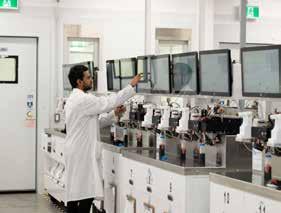
Thanks to the advancements in progeny proving and the focus on evaluating and selecting sires, the male side of the genetics equation was advancing at a rapid pace in Canada. It wasn’t until embryo transfer was first commercialized in 1972 that the focus shifted to speed up the enhancement of female genetics.
Embryo transfer allowed producers to multiply the offspring of their top cows and speed up genetic results within a herd. This technology also allowed exports of frozen embryos, opening up additional revenue streams for producers and breeders.
In vitro fertilization was commercialized in the late 1990s thanks to Boviteq, accelerating female genetic improvements even faster.
“We’ve made extraordinary improvements through in vitro that have allowed our industry to reduce genetic intervals significantly,” notes O’Connor, explaining that this technology has advanced so far that today, it is possible to take a genetic biopsy of an embryo to accurately identify the genetics and sex of a calf before it is born.
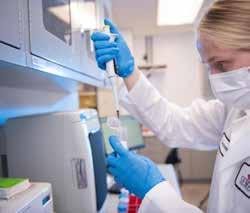
Sexed semen was first commercialized in the U.S. in 2003 by Sexing Technologies (ST). Since then, this genetic innovation has been a game changer for dairy producers and has quickly become the basis of many breeding decisions. Sexed semen allows producers to breed their top performing females to produce daughters that are collapsing genetic generations and enhancing cow performance and efficiencies. The ability to select gender has also increased beef on dairy breeding that is opening new revenue streams for producers too.
“Genomics have accelerated traditional progeny proving, creating a new era for bull ‘proofs’ that is delivering higher reliability and more confidence for producers making genetic decisions,” says O’Connor.
The ability to reliably calculate the performance of younger bulls thanks to DNA testing is changing the way producers make breeding decisions, like selecting the highest performing animals to accelerate genetic gain within their herds.
The ability to reliably calculate the performance of younger bulls thanks to DNA testing is changing the way producers make breeding decisions, like selecting the highest performing animals to accelerate genetic gain within their herds.
– Mark Carson


A legacy of innovation
“The vision of our Canadian dairy producer forefathers continues to benefit the industry significantly,” says O’Connor, noting that it’s thanks to the more than 20 genetics and artificial insemination (AI) producer owned co-ops that were formed across Canada between the 1940s and 1960s that shaped our country’s genetic improvement journey.
Mark Carson, genetic solutions manager with Semex points out that the individuality of every Canadian dairy farm means that every producer can leverage any or all of these technologies and innovations to build the best genetics that fit their operation and management system.
“Today, we have the ability to tailor our herd genetics to fit our climate, barns, feed conditions, on-farm technology, and surrounding environments that are unique to every province
and individual farm,” he explains. “And that’s pretty amazing.”
Genetic enhancement has also allowed producers to deliver more milk with fewer animals that has ultimately improved efficiencies in milk production, feed requirements, inputs, and the overall environmental footprint of the Canadian dairy industry.
“We’ve come a long way in advancing the production of such a superior milk product,” says Howard, noting that the past 100 years of genetic evolution in Canada has enabled dairy farmers to produce the most valuable, safe and nutritious milk products more efficiently than ever before. “There have been so many people over the years that have contributed, and I’m so grateful to be a part of this amazing industry.”
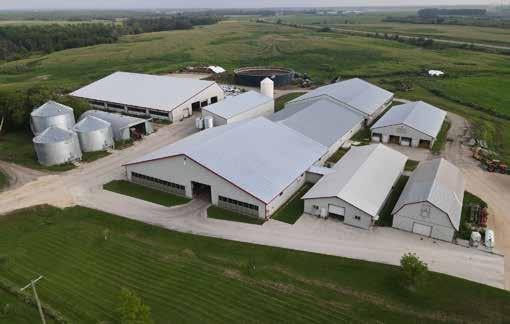

By Jeanine Moyer
From sexed semen to DNA testing, the last few decades have brought game-changing advances in dairy genetics – and the momentum isn’t slowing down. In fact, for some early adopters, the “future” is already part of their herd management, thanks to cutting-edge technology and smart breeding strategies that are reshaping dairy herds across Canada.
Behind these breakthroughs are dedicated individuals who’ve spent their careers turning genetic innovations into practical results on the ground. Mark Carson, genetic solutions manager with Semex, Jamie Howard, sales director at EastGen Inc., and Brian O’Connor, general manager of EastGen Inc. share their take where things are headed next – what to expect, what to get ready for and what could change how we think about breeding in the years ahead.
Embryo transfer is already in use on Canadian dairy farms and is expected to grow, especially with the rise of in vitro fertilization (IVF). By selecting topperforming females and replicating their genetics through IVF, farmers will be able to accelerate the improvement of female genetics in their herds at a faster pace.
Data collected on Canadian dairy farms is giving farmers powerful new tools for smarter genetic and herd management decisions. As robotic technology becomes more common, new types of data are predicted to emerge, paving the way for artificial intelligence to support genetic modeling and production forecasting in the near future.
Thanks to Immunity+, incorporating health traits into genetic decisions is a reality today. What’s expected to change is the increased focus on boosting dairy herds' natural disease resistance, recovery and immune response with the wider adoption of this genetic innovation. Healthier cows mean better fertility, higher productivity, greater efficiency, and longer-lasting animals.
Genomic testing, already common on Canadian dairy farms, is set to grow. By using DNA insights to add more precision to breeding and management decisions, farms can enhance the speed and reliability of their progress – and this trend shows no signs of slowing down.
Polled genes are already being widely adopted on Canadian dairy farms. Incorporating polled genetics into dairy herds not only improves the welfare and well-being of the animals by eliminating the need to dehorn cattle but also reduces labour requirements and increases farm worker safety.
For years, researchers have been digging deeper into the real power of milk – not just as a source of nutrition, but as a valuable contributor to human health. By understanding what’s in milk and how it impacts health, farmers can play a key role in producing milk tailored to tomorrow’s health-conscious market – meeting consumer demand and marketplace needs.








To meet the stronger demand for fresh dairy products in the fall, specifically yogurt and fresh cheese, the P5 Boards announce one additional incentive day to be issued on a non-cumulative basis in each of the months of August and September for conventional producers. Organic producers are issued one additional incentive day on a non-cumulative basis in September. This adjustment aims to maintain the production level forecasted for the period.
The P5 provincial boards’ primary objective is to continuously monitor the milk market situation and meet demand in the most optimal way and will continue to adapt production signals to address market changes, as required.
P5 production since the beginning of the calendar year has been very close to forecast except for the month of April, which has been one per cent lower than the forecast. With the announcement of additional incentive days, P5 boards are hoping that the P5 production will be more in line with the forecast for the fall period, to meet demand that is typically very strong.
On the markets side, things are going relatively well. The P5 quota, which is roughly the demand for raw milk in the P5 provinces, has increased by 2.7
per cent up to the end of March, tracking with the CDC’s optimistic scenario. As a result, butter stocks are increasing but at a lower rate than what was anticipated in the CDC model over recent months.
The P10 is officially in an over quota situation, with an estimate of 133,000 kg of butterfat in March and it is solely the responsibility of P5. This situation does not have any immediate impact but could translate into a financial impact in six months if production does not realign with quota. In this case, the six-month period would happen during the fall, a period when it is very unlikely that an over quota would occur due to the strength in the national demand.
“At the national level, CDC and provincial milk marketing boards are having discussions to see how to ensure there is enough flexibility in the continuous quota calculation for the longer term, particularly in a context where demand continues to be strong, stocks remain relatively high and meeting milk orders of processors continues to be a challenge on a weekly basis across P5,” says Patrice Dubé, Dairy Farmers of Ontario’s chief economics and policy development officer.
“The higher threshold for the over quota calculation is currently set at a butter-equivalent of 39,368 tonnes which is normally being met in June. Already in March, the P10 was above that threshold.
In April 2025, butter stocks reached 40,962 tonnes, up from March by 910 tonnes. April butter stock levels are at their highest level for the same month over the last five years.
Cheese stock levels for the month of April 2025 were at 105,201 tonnes, down 914 tonnes from March and higher than the last five-year average.
For the 52-weeks ending May 3, 2025, sales for fluid milk, fluid cream, yogurt, ice cream, cheese and butter increased/decreased by 0.4, 1.6, 5.4, 2.5, 2.9 and 3.0 per cent, respectively.
Canadian butterfat requirements in kilograms and actual butterfat production across the P10.
12-month production (in millions of kilograms)
12-month requirements (in millions of kilograms)
Canadian production has increased by 2.7 per cent over the previous 12 months, and requirements have increased by 2.9 per cent over the previous 12 months.
Average increase in retail sales for dairy products sold in Ontario and the dairy product’s share of the total market sales, including at hotels, restaurants and institutions.
This graph shows Ontario’s SNF-BF ratio for the last 12 months.
As of March 26, 2022
* Source: AC Nielsen & StatsCan NOTE: There is a two-month lag in the national retail sales data.
• To meet the stronger demand for fresh dairy products in the fall, specifically yogurt and fresh cheese, the P5 Boards announce one additional incentive day to be issued on a non-cumulative basis in each of the months of August and September for conventional producers. Organic producers are issued one additional incentive day on a non-cumulative basis in September;
• On the markets side, things are going relatively well. The P5 quota, which is roughly the demand for raw milk in the P5 provinces, has increased by 2.7 per cent up to the end of March, tracking with the CDC’s optimistic scenario;
• The higher threshold for the over quota calculation is currently set at a butter-equivalent of 39,368 tonnes which is normally being met in June. Already in March, the P10 was above that threshold.
Percentage of the total milk produced in Ontario that was used to produce dairy products.
202504
Fluid Milk & Cream Yogurt and Ice Cream Cheese Butter & Powders
April 2025
Fluid milk & cream
Yogurt & ice cream
Cheese
Butter & powders
Skimming
P10
For April 2025 (kg of butterfat/kg of solids non-fat)
*There is a two-month lag reporting these figures
% Solids non-fat
Class 1a1 (includes Classes 1a2, 1a3, 1c and 1d for confidentiality reasons) Fluid milk and beverages
Class 1b Fluid creams Class 2a Yogurt, yogurt beverages, kefir and lassi
Class 2b4 (includes Classes 2b1, 2b2 and 2b3 for confidentiality reasons) Fresh dairy desserts, sour cream, milkshakes and sports nutrition drinks
Class 2b5 Ice cream and frozen yogurt
Class 3a1 Specialty cheese
Class 3a2 Cheese curds and fresh cheeses
Class 3b2 (includes Class 3b1 for confidentiality reasons) Cheddar cheese and aged cheddar
Class 3c1 Feta
Class 3c2 Asiago, Gouda, Havarti, Parmesan and Swiss
Class 3c4 (includes Classes 3c3 and 3c5 for confidentiality reasons) Brick, Colby, farmer’s, jack, Monterey jack, muenster, pizza cheese, pizza mozzarella and mozzarella other than what falls within 3d
Class 3c6 Paneer
Class 3d Mozzarella used strictly on fresh pizzas by establishments registered with the Canadian Dairy Commission
Class 4a Butter and powders
Class 4d (includes Classes 4b1, 4b2, 4c and 4m for confidentiality reasons) Concentrated milk for retail, losses and animal feed
Class 5a Cheese for further processing
Class 5b Non-cheese products for further processing
Class 5c Confectionery products
MONTHLY PRODUCER AVERAGE GROSS BLEND PRICE
A total 3,157 producers sold milk to DFO in April compared with 3,188 a year earlier.
ONTARIO DEDUCTIONS, PER HL
For April 2025
* These figures are based on Ontario’s average composition for April 2025 of 4.3456 kg butterfat, 3.3148 kg protein and 5.9554 kg other solids, rounded to the nearest cent.
The graph below shows the 12-month blend price for the P5 provinces and Western Milk Pool (WMP).
*There is a two-month lag reporting these figures
The May 2025 Class III Price, US$18.57 per hundredweight, is equivalent to C$57.86 per hectolitre. This equivalent is based on the exchange rate US $1 = C$ 1.37249 the exchange rate when the USDA announced the Class III Price.
The Class III Price is in $ US per hundredweight at 3.5 per cent butterfat. One hundredweight equals 0.44 hectolitres. Canadian Class 5a and Class 5b prices track U.S. prices set by the U.S. Department of Agriculture.
Source: USDA
Co-ordinated by Dairy Farmers of Ontario’s communications and economics divisions. Questions? Please email questions@milk.org.
STAY UP TO DATE!
Weekly Update email newsletter every Friday for Ontario dairy producers.
Milk Producer magazine is the voice of Ontario dairy producers. Subscribe for free or read online at www.milkproducer.ca.
Dairy Farmer Update provides updates with the monthly milk cheque.
Producer Dashboard , a secure platform behind your password on MMS that contains important news, updates and forms.
www.milk.org
Facebook: /OntarioDairy Twitter: @OntarioDairy Instagram: @OntarioDairy

The first organized milk recording programs began in Denmark and Sweden, followed by other European countries. The primary goal was to identify high-producing cows and improve herd efficiency.
1904
The first official milk recording program began in Canada led by the federal government. Each month supervised tests were recorded as ‘official publications’ for production, awards, breed improvement and pedigrees.
Beginning 1800s – 1900s
1911
The passing of The Milk Test Act by the federal government supported regulatory compliance for milk quality while adopting the Babcock test to determine milk fat content.
1925
Ontario begins organized milk recording, led by the Ontario Department of Agriculture and agricultural colleges.
1930s - 1940s
Dairy herd improvement associations (DHIA) were formed to oversee and standardize milk recording programs and provide benchmarking for farmers.
Artificial Insemination programs were introduced and are the main benefactor driving milk recording.
Milk recording, also known as dairy herd improvement (DHI) testing, has played a critical role in advancing dairy farming by improving milk production, milk quality, herd health, and genetic progress. The practice has evolved over more than a century by adapting to technological advancements and industry needs to maximize its value to dairy producers. Canada’s milk recording history stands out for its early coordination, strong public-private partnerships, high data standards, and global leadership in dairy genetics. The integration of data and innovation continues to drive the success of Canada’s dairy sector.
Provincial ministries of agriculture and federal agencies like Agriculture and Agri-Food Canada were involved in developing and funding milk recording systems.
Government technicians played a key role in on-farm milk testing and laboratory methods evolved to provide consistency and comparability of data across provinces.
Milk recording sets the foundation for dairy genetics with the inception of recorded milk weights and on-farm butterfat testing.

1960s
Together, 10 provincial organizations and the federal Records of Performance (ROP) program provide milk recording and herd management services.
The introduction of computerized recordkeeping made it easier to track milk and fat yields and support the groundwork for genetic evaluations.
1970s
Milk recording and type classification were an integral part of the rise of young sire proving programs allowing producers to select cows and bulls with superior milk production traits.
AI organizations incentivized farmers to participate, recognizing the importance of broad-based accurate data.
Collaboration grew between milk recording services, breed associations and AI centers.
The Ontario Milk Marketing Board took a leadership role in the privatization of milk recording, leading to the formation of the Ontario Dairy Herd Improvement Corporation from the provincial government (1981). Centralized labs begin milk analysis, with value-added protein testing and SCC screening (1983), giving Ontario producers better management tools and herd insights.
1985
The federal ROP activities in the province are transferred to Ontario DHI.
Late 1980s
DHI and ROP programs are privatized across the country following Ontario’s lead.
The hiring of more women in field positions contributed to the change in traditional attitudes in conservative farm communities.
Early 1990s
The introduction of Multiple Component pricing drives milk protein testing and computers are introduced in the field for test day data collection (1993).
An Industry Standards committee sets the standards for Publication and records used for genetic evaluations (1994).
Dairy cattle genetic evaluations, originally part of the federal government, were privatized to form the Canadian Dairy Network (CDN), an industry run organization (1995). Milk recording data (management and published) from Canada feeds into world-class genetic evaluation programs.
Introduced the first herd management score* in Ontario (1996). (*Herd Performance Index)
Late 1990s
Launched Milk Urea Nitrogen (MUN) testing in Canada – a global first (1998).
Centralized all dairy record processing across Canada into a single database and system, still used today.
The first robot herd DHI test in North America was conducted in Ontario (1999).
Early 2000s
Evolution of services with electronic milk meters, on-farm software, herdbook registration, and herd management reporting.
Sensors and devices track milk production and cow health, integrating data for better herd management.
CanWest DHI, Valacta and Canadian Dairy Network (CDN) form Lactanet Canada - a unified national body focusing on dairy data, genetics, and management services.
2020
Lactanet Genetics (formerly CDN) commemorates 25 years of genetic services. Genomic testing revolutionizes dairy breeding, providing DNA-based evaluations for production, reproduction, longevity, health, conformation and other traits.
Introduced electronic DHI as a fully remote milk recording electronic service that supports many advantages of milk recording without physical sampling.
Established the International Dairy Data Exchange Network (iDDEN) in collaboration with six international organizations to standardize and continue to integrate data from automated milking systems.
Celebrated the first virtual announcement of Canada’s Best Managed Herds.
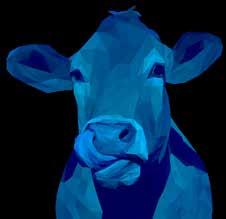
Canadian milk recording programs have long emphasized data accuracy, traceability, and integrity, earning global trust. They have evolved from manual record-keeping to sophisticated data-driven herd management. These high standards have allowed Canadian dairy genetics and data to be influential in international benchmarking and breeding programs. With continued advancements in genetics, automation, and digital technologies, milk recording remains a cornerstone of efficient and sustainable dairy farming in Ontario and also worldwide.
2025
Ontario celebrates 100 years of milk recording excellence and Canada remains a leader in innovation, genetic progress, and data-driven dairy farming.
2004
Established CanWest DHI as an alliance between Western Canadian DHI Services and Ontario DHI to unify efforts and create a more integrated approach to dairy herd improvement across multiple provinces.
Mid 2000s
Valacta was created as a Quebec Center of Expertise through the Quebec Dairy Herd Analysis Service (PATLQ/DHAS) (2006).
Atlantic Dairy Livestock Improvement Corp. (ADLIC) merged with Valacta (2008).
Introduced genomic evaluations (2008).
Late 2000s
Expanded milk testing services for Johne’s, Leukosis/BVD, Mastitis, pregnancy (GestaLab), and ketosis/BHB (KetoLab).
Launched LactanetResolutions.ca, an online portal for all licensed dairy farmers to participate in shaping policy, best practices, programs, and services related to milk recording, genetics and the dairy industry.
2022-2023
Released the Herd Sustainability Index, as well as genetic evaluations for Methane Efficiency and Body Maintenance Requirements, in response to milk recording becoming an essential part of sustainable dairy farming.
2024
Publication lactation standards evolve to include component production data from automated on-farm sensors.

Sources
• Agriculture and Agri-Food Canada. (n.d.). Dairy sector overview. Government of Canada. Retrieved from https://agriculture.canada.ca
Canadian Dairy Network (CDN). (2017). Annual report and genetic progress archives. Retrieved from https://web.archive.org/web/20200214034335/ http://www.cdn.ca
CanWest DHI. (2015). Celebrating milestones in dairy herd improvement: A history of CanWest DHI. Guelph, ON: CanWest DHI Publications.
• Dairy Farmers of Ontario. (2024). Dairy industry history and statistics. Retrieved from https://www.milk.org
Journal of Dairy Science. (Various issues). Historical perspectives on herd improvement and genetic selection. American Dairy Science Association. https://www.journalofdairyscience.org
Lactanet Canada. (2020–2024). Our story: Integrating herd improvement, data, and innovation. Retrieved from https://www.lactanet.ca
Ontario Ministry of Agriculture, Food and Rural Affairs (OMAFRA). (n.d.). Dairy production and herd improvement history. Government of Ontario. Retrieved from https://www.omafra.gov.on.ca
University of Guelph – Ontario Agricultural College. (n.d.). Agricultural heritage archives and dairy science research. Retrieved from https://www. uoguelph.ca/oac Valacta. (2018). Annual review: Milk recording services in Eastern Canada. Retrieved from https://web.archive.org/web/20200115000000*/valacta.com
The information contained in this article is for general informational purposes only. While every effort has been made to ensure the accuracy and reliability of the content, no guarantees are made regarding its completeness, correctness, or timeliness. The contributors and publisher disclaim any liability for any errors or omissions and accept no responsibility for any loss or damage that may arise from reliance on the information provided.
By Hanne Goetz, Department of Population Medicine, OVC - University of Guelph
AGRICULTURAL EXTENSION refers to communicating information and knowledge to foster learning and behavioural change to enhance farm productivity, efficiency or health. Over the years, agricultural extension has involved several different partners.
Dr. C. C. James, then Deputy Minister of Agriculture, laid the groundwork for a new approach to agricultural extension in 1906. His forward-thinking proposal to assign trained agricultural professionals to every area of the province was realized in 1907 with the deployment of the first seven District Representatives. These representatives were tasked with managing the technical side of farming and looking after the interests of the farmers in their respective regions (Source: OMAFA).
In southwestern Ontario, extension initiatives shifted in 1922 when the Ontario Veterinary College (OVC) moved from downtown Toronto to Guelph to join the Macdonald Institute and
the Ontario Agricultural College (OAC). The stated purpose of this move was to strengthen connections with the agricultural economy, thereby improving interactions between producers and researchers. These three founding colleges would be amalgamated in 1964 to form the University of Guelph.
At that time, the primary methods of extension were based on a “top-down” approach, where researchers were viewed as authority figures who created knowledge and passed it on to producers to implement new or improved practices. Additionally, research was conducted mainly at university farms. The assumption of this model, termed the “Diffusion of Innovations,” was that progressive producers would then implement this new information or technology, and other producers would be motivated to make similar changes on their farms.
In the 1980s, this notion of top-down extension practices was criticized, and it began to trans-

>
> Increases visits which is directly correlated to milk production
form into a “producer-forward” extension model. Although top-down extension efforts were thought to be somewhat effective at adopting simple techniques, more complex practices required interactions from various knowledge experts. The new farmer-first approaches, or “bottom-up” models, encouraged extension initiatives to begin with the knowledge, problems and priorities of producers and their families, rather than starting with the researchers.
As with the evolution of extension methods for distributing research findings to users, the topics have developed over time. In the early years of agricultural extension, efforts focused mainly on issues like disease mitigation and eradication, improving diagnosis and treatment for disease based on laboratory findings rather than experience or intuition alone, and methods to increase production. For example, the 1925 Ontario Veterinary College Annual Report describes extension efforts focused on vaccination to prevent abortion in cattle. At the time, brucellosis was a significant concern for cattle and people. Extension work today is often related to environmental sustainability and improved productivity, efficiency and animal welfare, usually accompanied by an economic analysis. Rather than coming from a single authority figure, extension is a team effort, including independent consultants, producer organizations, government agencies, and universities. Today, studies at research stations are complemented by large-scale trials and projects on commercial farms, further centring the research on a farm setting.
Looking to the future of agricultural extension, researchers increasingly engage knowledge users, such as producers, as active participants in research project planning, design and execution.
The need for integrated, cross-disciplinary research continues to expand: one topic may intersect with diverse fields like economics, animal health, milk composition, and sustainability to address complex industry challenges and opportunities. Working collaboratively throughout the value chain allows extension to stay aligned with industry needs and contribute to practical solutions as agriculture continues to evolve.
Today, research funding agencies commonly require researchers to develop a knowledge translation and transfer plan for how research findings will be shared and applied. Digital tools and technology such as apps, podcasts

Sources https://www.archives.gov.on.ca/en/explore/online/agriculture/strength.aspx https://www.uoguelph.ca/about/history/ and social media are leveraged to reach a broader audience than ever before. This collaborative, producer-centric approach ensures that knowledge is distributed efficiently and in practical formats and will continue to evolve as industry needs develop. This integrated approach, leveraging technology and collaboration, is crucial for the ongoing advancement of extension.
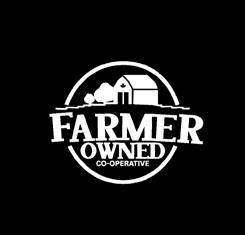


By ACER Consulting and Dairy Farmers of Canada
Why does quality assurance matter?
FOOD SAFETY, ANIMAL WELFARE, ENVIRONMENTAL SUSTAINABILITY, AND ECONOMIC STABILITY are just a few of the challenges facing today’s food system. As our food system and society evolve, so do the needs and wants of food supply chains. Farmers today contend with pressures around improving animal welfare, reducing environmental impacts, maintaining biosecurity protocols, and much more — all while maintaining a profitable business. Some of these have always been challenges and priorities, while others represent new expectations. For nearly every food animal sector, quality assurance programs have been designed to provide proof points for everyone — from processor to the public —that these topics are being addressed. As Canadian dairy farmers, this has always been your focus and proAction® has been your tool to demonstrate that commitment.



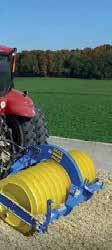

Consumers: Consumer expectations have evolved over time. While affordability remains important, today’s consumers are increasingly concerned with how their food is produced. Questions about food safety, ingredient transparency, animal welfare, labour practices, and environmental impact have moved to the forefront. For many, being a mindful consumer means considering the entire supply chain and holding brands accountable for their sourcing and production practices. No commodity is exempt from this scrutiny.
Dairy Farmers of Canada (DFC) market research shows that while consumers love dairy products, they are concerned with the animal welfare and environmental impacts associated with dairy production. With no shortage of alternatives available on the market, these concerns could drive them to turn away from dairy. In fact, a recent DFC survey found that 46% of the consumers that reported enjoying dairy products would be open to alternatives, or expressed concerns about animal welfare and the environment. When looking at younger generations, this number increases drastically to 60% of consumers. These are consumers that should be engaged and informed to encourage them to continue purchasing dairy products.
Processors: Pressure to demonstrate quality and consistency comes not only from consumers but also from dairy processors. Processors are under increasing scrutiny from their customers — whether retailers, consumers or the broader public — who expect transparency, traceability and proof of responsible sourcing. To maintain market access and



















meet these expectations, processors must ensure that the milk they purchase is produced according to high and consistent standards for food safety, animal care and sustainability. These commitments are often tied to broader corporate goals around people, the planet and profit, and failure to meet them can risk customer relationships or brand reputation. In international markets, such as the European Union, additional requirements, like third-party audits and restrictions on certain products, raise the bar even further. A credible on-farm quality assurance program helps processors demonstrate that Canadian dairy meets these expectations from farm to final product.
The proAction program was designed in consultation with farmers at every stage to ensure feasibility, credibility and ensure in-person visits are kept to a minimum. The program is designed by and for farmers, focused on addressing the needs of the supply chain, while balancing on-farm practicality and continuous improvement. The approach helps to mitigate risk, ensure that the pooled supply of milk is protected and allows industry to establish benchmarks that are used to promote continuous improvement. Because the same requirements and expectations are implemented on all farms across the country, consumers and processors can rely on a consistent, high-quality product, no matter where in Canada they make their purchase.
With this foundation, Canadian dairy can demonstrate high standards, speak to continuous improvement goals and implement changes to keep pace with research and technology, to meet the ultimate goal of growing the profitability of the dairy sector.
Many countries and commodities did not respond to consumer and retailer demands the way Canadian dairy did. In many countries, the absence of a universal standard across the country has left customers, retailers and processors to create their own expectations, resulting in farmers needing to adhere to multiple program standards if they ship to multiple buyers. This results in more on-farm inspections, paperwork and redundancy for farmers to navigate.
Other sectors in Canada, such as poultry, eggs, beef, and pork have also experienced such pressures, as food safety, environmental sustainability

The proAction program was designed in consultation with farmers at every stage to ensure feasibility, credibility and ensure inperson visits are kept to a minimum.
and animal welfare are widespread concerns. They have also developed quality assurance programs for farmers to address the need. Today, quality assurance is a must have — it’s no longer an option.
In a world of rising expectations and growing competition, Canadian dairy stands out because of proAction. It’s how farmers prove their commitment to quality, animal care, environmental sustainability, and food safety — every day, on every farm. And consumers are taking notice: 86% recognize the Blue Cow logo, which ranks among the top three most influential and trusted logos in Canada.
proAction isn’t just about compliance — it’s about pride, progress, and protecting the future of Canadian dairy.
Interested in hearing from the front lines of proAction’s inception? Scan the QR code to check out the Value of proAction Podcast and hear from Ron Maynard and Nicole Sillett about the origins of the program and how it became what it is today.


By ACER Consulting
OVER THE PAST DECADE, dairy farming has undergone a major transformation in how animal welfare is understood, managed and verified. In response, a wave of programs and policies have emerged — all designed to assess, improve and assure animal care on farms. At their foundation, these programs establish clear, minimum welfare standards (often linked to regulations), while encouraging continuous improvement. For dairy farmers, this means having a set of tools to show that they care for their animals, while meeting high production standards — and to stay competitive in an industry that’s always evolving.
But the responsibility for animal welfare doesn’t end at the farm gate. Today’s consumers care deeply about how their food is produced — and they expect the entire dairy supply chain to reflect those values. From processors to retailers, exporters to producers, there’s growing demand for transparency and accountability. “Quality dairy” now means more than just great milk — it means milk produced with care for animals, the environment and public trust. That’s where quality assurance (QA) programs, like proAction, come in: they connect expectations with action, giving the entire supply chain confidence that animal care, sustainability and food safety are being taken seriously — and delivered consistently.


FARM Program, the U.K.’s Red Tractor Scheme, and many others. These programs focus on foundational aspects of animal welfare, including access to adequate feed, water, and shelter; appropriate care for sick or injured animals; clear euthanasia protocols; veterinary oversight; disease prevention and management; and a zero tolerance policy on abuse or neglect. These core elements form the baseline for good welfare and are widely recognized across QA frameworks.
These practices weren’t just put in place because of these programs — farmers were already aligned with many of these expectations through their own good management. QA programs simply provide a structured way to demonstrate that care. Importantly, they also offer a way to show when change isn’t needed — when welfare outcomes are already strong and current practices are working well.
However, new and more nuanced questions are emerging — questions that existing programs don’t always fully address. While there may not yet be consensus or requirements around these issues, they are increasingly on the radar of buyers, retailers and the broader public. At this stage, the expectation is not necessarily immediate action, but rather increased transparency and future-oriented thinking. These emerging areas of interest include:
• Calf care, including freedom of movement and social housing
• Outdoor access and opportunities for exercise
• Cow-calf contact
• Humane handling of surplus (male) dairy calves
• Environmental and behavioral enrichment across all age groups
• Supporting animals’ affective state — that is, promoting positive emotional experiences and minimizing fear, stress or frustration
Globally, QA programs are responding in different ways. In some countries and for some dairy brands, standards are beginning to evolve — for instance, requirements for freedom of movement or basic enrichments are now part of certain welfare schemes. For other topics, such as cow-calf contact, the conversation remains exploratory. There is broad recognition that further scientific research and on-farm experience are needed before setting clear expectations or guidelines. Still, these discussions signal a growing interest in rethinking what animal welfare means in a modern dairy system — and how the sector might proactively engage with those expectations.
What’s most important is that QA programs offer farmers a platform to communicate what they are doing and why. They create space for meaningful, two-way dialogue between producers and customers
conversations that explore the rationale behind current practices, clarify expectations across the supply chain, and emphasize the value of a practical, science-based, and continuous improvement approach. Customers are not demanding perfection or immediate change; rather, they are looking for transparency, accountability and a demonstrated commitment to ongoing progress. This is why being part of the conversation is key — these questions are being asked whether we are in the room or not — and by engaging in the conversation, we have the opportunity to shape the outcome and develop a shared vision.
As Canada’s only national dairy QA program, proAction plays a unique and important role in supporting animal health and welfare in the dairy industry. It offers a comprehensive framework that touches on food safety, milk quality, animal care, traceability, biosecurity, and environmental stewardship. When comparing proAction standards to other programs around the globe, we see they are robust and comprehensive. They align with the non-negotiables, such as tail docking, ensure consistent alignment with best practices, such as pain control for animal health procedures, and serve as a commitment to continuous improvement on animal — based measures, such as injuries and lameness.
As industry, stakeholder, and public priorities and concerns continue to change, the Canadian dairy industry (and proAction) will need to evolve and adapt to stay relevant. This is where the Code of Practice revision process comes into play — offering a 10-year look into the future on what is important for industry to continue to position itself for long-term alignment and sustainability with the broader dairy sector when it comes to welfare.
At the same time, valuable opportunities remain to enhance how programs
like proAction are implemented. This includes making better use of the data already being collected — not only to support research and benchmark progress, but to help inform farmer decision-making, highlight success stories and support transparent, evidence-based conversations with customers about the good work happening on farms.
Across the global dairy industry, one thing is clear: QA for cattle health and welfare isn’t just a passing trend — it’s a permanent fixture. In fact, as expectations rise and the pace of change accelerates, QA programs are becoming more essential than ever. When grounded in sound science and shaped in partnership with producers, they offer a credible and practical path forward.
Public questions and scrutiny are likely to remain. But so will opportunities — to engage to improve, and to lead. With robust QA frameworks, dairy farmers are well-positioned to demonstrate that they’re not just meeting standards, but actively shaping a more sustainable and responsible future. And just as importantly, QA provides a way to validate when current practices are already effective — reinforcing trust in farmers’ expertise and stewardship.
This is about more than compliance. It’s about building trust, securing market access and proudly showing that animal care is a core value — not just for the farm, but for the entire dairy supply chain. Moving forward, the most successful programs will be those that evolve, listen and lead — turning good intentions into tangible, credible outcomes.
For producers, that means embracing QA not as a burden, but as a tool — to tell their story, strengthen their business, protect what’s working, and stay ahead in a rapidly changing world.

The Environmental Farm Plan (EFP) is an assessment voluntarily prepared by farm families to increase their environmental awareness in up to 23 areas on their farm. Through the EFP process, farmers highlight their farm’s environmental strengths, identify areas of environmental concern and set realistic action plans with timetables to improve environmental conditions. Farmers can then use their EFP in conjunction with cost-share programs to begin implementing their action plans.
The idea for EFPs originated from the Ontario farm community. Farmers were involved in every stage of developing the original EFP through the Ontario Farm Environmental Coalition (OFEC). The program continues to be delivered to the farm community by the Ontario Soil and Crop Improvement Association (OSCIA). OFEC was led by agricultural organizations including: Ontario Federation of Agriculture, Christian Farmers Federation of Ontario and Farm and Food Care Ontario.
OSCIA offers EFP workshops throughout the year. Below is the link to the workshop calendar and OSCIA is keen to offer workshops where there is interest. Contact your local field representative to discuss.
www.ontariosoilcrop.org/canada-ontario-environmentalfarm-plan/
www.ontariosoilcrop.org/contact/
Ag in Motion is back with an exciting in-person experience for visitors to see and experience the latest products, technology and equipment in western Canadian agriculture. Visitors can explore more than 100 acres of trade show space with over 560 exhibitors.
Dates: July 15 to 17, 2025 from 8:30 to 4:30 each day (rain or shine)
Location: 15 minutes outside Saskatoon, Sask. near Langham.
July 14: Ag in Motion Innovations Program at the Innovation in Ag Reception
The Innovations Program, presented by Conexus Credit Union, highlights the latest advancements in agricultural technology at an evening reception hosted by Ag in Motion Agricultural Manufacturers of Canada.
15:
The Junior Cattle Show, presented by BMO, takes place on Tuesday, July 15, 2025, from 10 a.m. to 4:30 p.m. at the Livestock Central Outdoor Arena. Young cattle enthusiasts (ages 6–21) present their cattle in various classes. Celebrate the next generation of livestock producers at this exciting new event.
July 16: Bridging the Gap: Farm Transition Session with RBC, Farm Management
From 12 noon to 2 p.m. in the Special Events Tent, this is a must-attend event for farm families navigating the complexities of farm transition. Having the right knowledge, resources and team around you is crucial to ensuring a transition is done properly. Preregistration is required. Visit https://aginmotion.ca/demos-events/special-events/



Canadian Mental Health Association
At Canadian Mental Health Association (CMHA) Ontario, supporting the mental health and wellness of the farming community is a priority. That’s why they established Agriculture Wellness Ontario (AgWO), a hub of provincial programs all focused on supporting the well-being of people in and around Ontario’s agriculture industry.
The AgWO suite of programs strives daily to encourage the agricultural community to recognize mental health issues and promote support-seeking when needed, so those facing a mental health concern can get back to being their full selves.
Since 2022, AgWO’s core programs have included:
• Farmer Wellness Initiative, a free counselling service with 24-7 intake available at 1-866-267-6255; the Guardian Network, a community of trained mental health advocates embedded in agriculture;
• In the Know is a mental health literacy program designed specifically for farmers, their families and those who are involved and/or support the agriculture sector. Through these free, four-hour workshops, participants cover the topics of stress, depression, anxiety, substance use, and how to start a conversation around mental well-being.
The workshops are facilitated by one of CMHA’s mental health professionals using ‘real-life’ examples from agriculture.
Upcoming session will run virtually monthly and is open to anyone to attend: Aug. 6, 2025 - 10 a.m. – 2 p.m. – Virtual
Over the past year, two new programs have been developed to reach even more individuals with education and resources to support mental wellness in farming.
Growth Workshops are AgWO’s quick, practical mental health workshops designed for the busy lives of those in agriculture. In just an hour or less, participants gain tools to tackle challenges, prioritize self-care and connect with their community – all tailored to the unique demands of agriculture. These workshops provide a great base knowledge of topics while providing participants with practical skills and resources.
Participants learn about the dimensions of wellness, gain insights into mental health fundamentals and learn about programs and resources
This workshop addresses the unique pressures farmers face, offering techniques to recognize, manage and mitigate stress. It introduces practical tools for mental resilience, guiding participants to navigate stress effectively and be proactive with their wellness.
To learn more about Growth Workshops, contact esayles@ontario.cmha.ca.







Ketosis risk is hard to predict. Help prevent it with Kexxtone™.
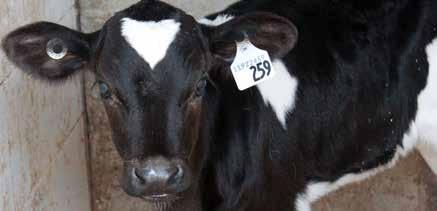
By Veal Farmers of Ontario
OVER THE PAST CENTURY, calf feeding and management have evolved, blending traditional wisdom with modern advancements. While hygiene, nutrition and health management remain essential, research and technology continue to improve calf care, making it more effective and efficient. By comparing historical approaches with modern innovations, producers can better understand past lessons and embrace future improvements.
Cleanliness has long been recognized as critical to raising healthy calves. In 1914, The Calf Book emphasized that unclean pails were a primary cause of health issues. Then, in 1928, Care of the Dairy Calf reinforced the need for clean feed, pens, bedding, and utensils to prevent disease.


Today, technology allows producers to measure bacterial levels, refine cleaning protocols and use scientifically proven disinfectants. Despite advances in hygiene tools, the fundamental principle remains unchanged: a clean environment supports calf health and productivity.
Early guidelines stressed proper navel care to prevent infections. In the early 1900s, producers were advised to clip the navel cord and apply tincture of iodine immediately after birth. While clipping is no longer recommended, iodine (seven per cent tincture) remains standard practice, reinforcing the effectiveness of this simple yet vital preventative measure.


AGRI-TRAC Milled our dair y barn floors in August of 2000.22 Years later we just had AGRI-TRAC backto do them again. It lasted 22 Years! We chose AGRI-TRAC bothtimesinstead of grooving because it works and lasts. We have experience, grooving does NOT work! Thank you AGRI-TRAC.
Mario Vriens Friendly Farms Arthur, ON
Water has always been essential for calves. Early recommendations suggested offering fresh water at two to three weeks of age, but today’s best practices advocate for free-choice water from birth. Research shows that early water access increases starter feed intake, supporting growth and development.
Despite these proven benefits, some farms still restrict water access. Ensuring fresh, clean water is available at all times remains one of the most economical ways to improve calf health and maximize growth potential.
Feeding calves has long required careful scheduling, with historical recommendations favoring small, frequent feedings to mimic natural nursing patterns. However, labour challenges led many farms to adopt less frequent feedings.
AGRI-TRAC gives thecows the Traction they need without being too aggressive on their feet We also like how the floor is easy to scrape and clean.
Today, automated feeders allow calves to eat more naturally, eliminating rigid schedules while improving nutrition and digestion. Additionally, maintaining milk at the correct temperature — between 38 to 40°C (100 to 105°F)— remains as crucial now as it was decades ago.
James Walker Walkerbrae Farms Guelph, ON
Colostrum management is now recognized as fundamental to calf health. While early dairy industry records did not heavily emphasize colostrum feeding, recent research highlights its critical role in boosting immunity, reducing disease risk and improving productivity.
James Walker, Walkerbrae Farms Guelph, ON
A 2019 study by Dr. Dave Renaud at the University of Guelph examined passive immunity rates among Ontario dairy calves. In 2004, 37 per cent of calves failed passive immunity tests, indicating poor colostrum absorption. By 2019, this number improved to 19 per cent, reflecting advancements in colostrum feeding practices across Ontario farms.
Educational programs such as the “Calf Care Corner” e-newsletter and the Healthy Calf Conference, led by Veal Farmers of Ontario, have helped producers refine colostrum management, ensuring healthier, stronger calves.
Growth and disease management
Recent research by Elizah McFarland, Dr. Greg Keefe and Dr. J. Trenton McClure at the University of Prince Edward Island, (2024) highlights the impact of weaning weight on a cow’s first lactation performance. Their findings show that for every one-kilogram increase in weaning weight, milk yield improves by 25.50 kg, protein by 0.82 kg and fat by 1.01 kg.
Additionally, the study emphasizes early disease treatment in calves, demonstrating that prompt intervention enhances productivity later in life. Proactive health management is key to raising productive dairy cows.
Veterinary involvement
Despite advances in nutrition and hygiene, veterinary involvement is often overlooked in calf management. Farms that work closely with veterinarians see lower mortality rates, improved growth and better herd productivity.
Developing structured calf
health monitoring and feeding practices, reducing disease risks and optimizing calf outcomes. Customizable protocols are available for herd veterinarians at https://calfcare.ca, enabling producers to tailor management strategies.
Research into precision feeding, extended colostrum supplementation and automated feeding systems is shaping the future of calf nutrition.
• Precision feeding uses data-driven insights to tailor calf diets in real time, allowing automated feeders to adjust feeding schedules based on individual needs.
• Extended colostrum feeding is being studied to enhance immunity and long-term productivity.
• Automated feeding systems continue to improve, optimizing portion control, feeding frequency and hygiene while reducing labour demands.
tradition with innovation
While technology continues to evolve, the foundations of calf feeding — cleanliness, nutrition and management — remain unchanged. Today’s producers can leverage modern advancements while refining historical best practices, ensuring calves receive optimal care while improving efficiency and productivity.
As dairy farming advances, future innovations promise even greater strides in calf health and management. By building on past wisdom and embracing new technologies, dairy producers can raise thriving, productive calves, strengthening the future of the industry.

e-newsletters on calfcare.ca.








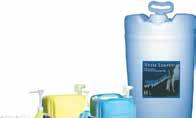

“We are using Udder Comfort™ since it rst came out. I think we were the very rst customers,” says Nick Thurler of Thurler Farms, Inc. Nick and his sons Robert and Michael operate the dairy, milking 480 to 500 cows. His sons are the third generation. Today, they are also involved in manure to biogas.
“Udder Comfort softens and soothes the udders. When we see a cow that needs it, we put it right on, right away, and things get better. We also like the blue color. Other milkers see it and pay more attention to that cow,” Nick explains.
“We tried other products, but they didn’t seem to work. Udder Comfort works,” Nick adds.


By Workplace Safety & Prevention Services
FROM STOOLS AND PAILS TO ROBOTIC MILKERS, dairy farming has changed dramatically in the past century. Our knowledge, attitudes and skills related to health and safety have also changed. “We have so much more awareness about farm safety than we used to have. With organizations such as Workplace Safety & Prevention Services (WSPS) and online access to information, so much is at our fingertips now,” says Ryan Dick, Health and Safety Consultant with WSPS.
Over the decades, we have seen the dairy farming industry shift from smaller family-run farms to larger corporate farms and agribusiness. Instead of five acres, we have farms of 500 acres today, made possible in large part due to technological advances.
“A hundred years ago, many family farms still had horses pulling
carts and wagons and milking was done by hand. Now we have automated tractors and robotic milkers. The growth in production has been exponential,” says Ryan.
Technology and regulation put focus on safety
These technological advancements have not only improved production, they have also made the working conditions on farms significantly safer. “The first tractor I rode on had no guards and an open cab, which is very different from the sensors and other safety features on tractors today,” says Ryan. While farming is still quite labour-intensive, the tools and machines available now make it possible to get more done in a day and to get it done safely.



Scientific and medical developments also played a significant role in improving health and safety for dairy farmers. “For example, we understand so much more now about the chemicals we use and how they interact with our bodies,” says Ryan, describing how training and the use of respirators are standard practice to reduce exposure to hazardous chemicals. “We also know that long-term exposure to noise could lead to hearing loss, so now we use hearing protection,” explains Ryan.
As dairy farms adopted technology and expanded operations, they were also hiring employees. As farms became employers, employment legislation began to apply, such as the first Employment Standards Act that came into effect in 1968. “Recognition was growing in other industries about workplace safety and efforts were being made to reduce injuries and fatalities. As farms transitioned from homesteads to businesses, they were also experiencing a growing awareness about safety,” says Ryan.
A group of volunteers joined together in 1924 to spread the health and safety message. This was the beginning of what eventually became the Industrial Accident Prevention Association (IAPA), which opened their first training centre in 1965. By 1973, the Farm Safety Association (FSA) had been established to focus specifically on the hazards related to agriculture, landscaping, horticulture, and agribusiness.
“And then, in 2006, farming operations were formally added to the Occupational Health and Safety Act,” adds Ryan. WSPS was formed in 2010 when IAPA, FSA and the Ontario Service Safety Alliance amalgamated. Since then, WSPS has continued to work closely with Ontario farmers to reduce hazards and improve health and safety. Lost-time injuries in agriculture have been reduced by 48% since 2002.
The introduction of the internet and the development of online training and resources had a major impact on farming. “Your circle of influence used to be your parents, neighbours and maybe the people at the local hardware or supply stores. With the connectivity of the internet, suddenly farmers could access information and learn from each other on a global scale,” says Ryan. “It became so much easier to find out what others were doing and share best practices.”
Because farms are generally in less populated, rural areas, access to health and safety training was often limited, unless you were able to travel. “Virtual training and eLearning has changed all of that. Farm workers can access specialized training and certifications easily online, which has helped standardize safe work procedures across the province,” says Ryan.
From podcasts to videos, organizations such as WSPS and the Canadian Agriculture Safety Association (CASA) bring health and safety expertise to farms on demand. Ryan recommends checking out the Farm Safety Roundup podcast (realagriculture.com/farm-safety-roundup) and WSPS’ Agriculture and Horticulture Safety Centre (wsps.news/Ag) for more free resources.
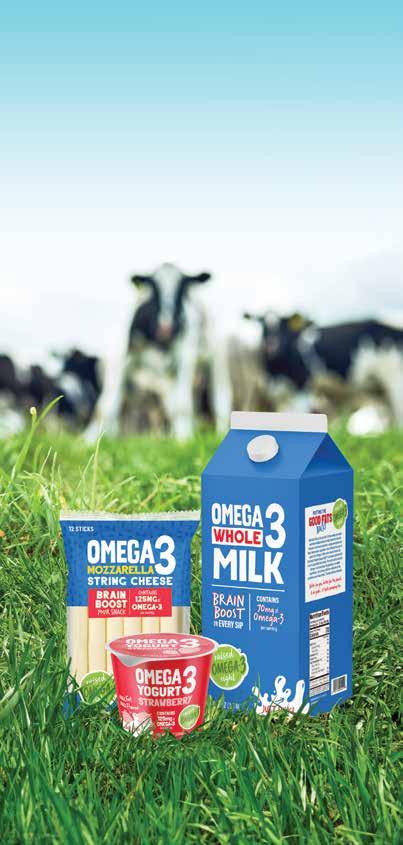
July 13 to 16, 2025 at the Westin Harbour Castle in Toronto, Ontario

We live in a time of constant innovation and change, both in the dairy sector and beyond. In response, our industry has continuously adapted to global instability, changing political views both at home and abroad, evolving consumer tastes and preferences, and the ever-growing need for increased sustainability efforts to mitigate climate change.
Amidst this landscape, Canadians have come to understand, in very concrete ways, what it means to be vulnerable to supply issues and the importance of Canadian food sovereignty as we endeavour to protect our national food security and self-sufficiency. Congratulations to Milk Producer magazine on 100 years of keeping Ontario’s farmers informed

At the 2025 Annual General Meeting in Toronto, farmers will learn more about and discuss key issues affecting our sector today and the tools we must use to succeed and thrive in times of change. Industry specialists and leaders will speak on a wide r an g e of topics, including promo tin g agriculture on the world stage, policy, progress and the path ahead, and the lessons learned from the Cool Farm Tool carbon footprint calculator pilot project.
Rounding out our educational sessions, Université de Laval professor Maurice Doyon and political analyst Rob Rousseau will speak on today's political and economic environment.
Attendees can take also advantage of an exciting range of optional activities scheduled throughout the event. These include visits to Niagara Falls, Ripley’s Aquarium of Canada, the Royal Ontario Museum, and the CN Tower, as well as a guided tour of the University of Guelph’s Ontario Dairy Research Centre in Elora. The closing banquet will take place at Steam Whistle Brewing.
Join Dairy Farmers of Canada from Sunday, July 13 to Wednesday, July 16 at the Westin Harbour Castle in Toronto. You can register for in-person or virtual attendance now at Dairyfarmersofcanada.ca
DFC congratulates Dairy Farmers of Ontario on Milk Producer magazine reaching the 100-year milestone. Since 1925, Milk Producer has been a voice for Ontario's dairy farmers and industry stakeholders, informing and educating on all aspects of the dairy industry in this province.
“For a century, Milk Producer has been a fixture in the homes and barns of thousands of farmers across Ontario’s communities,” said DFC President David Wiens. “Dairy Farmers of Canada appreciates the opportunity to contribute to these pages. On behalf of everyone at DFC, thank you to all the writers, editors, and contributors who have made Milk Producer great over the last 100 years!”


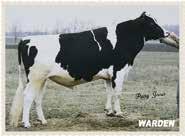








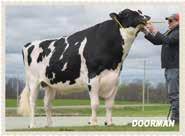

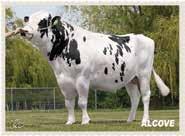


For over 75 years, EastGen and our legacy companies have proudly supported Canadian dairy farmers with innovative genetic solutions.
We extend our heartfelt congratulations to the Ontario Milk Producer on reaching an incredible milestone — 100 years of providing a strong, consistent voice for Ontario’s dairy farmers. Here’s to a century of dedication, advocacy, and excellence!
